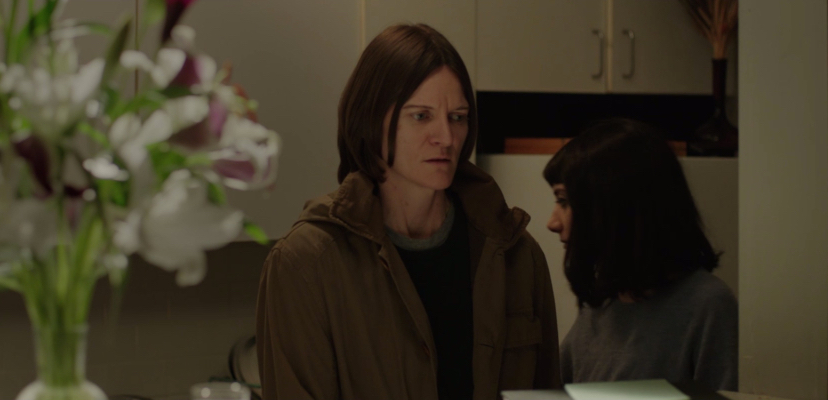The 50 Best Lesbian, Queer, and Bisexual Movies of the Decade
I just want you all to feel seen.
It’s corny, it’s cliché, but it’s true. I want every lesbian, every queer woman, every non-binary person, I want us all to know that our stories matter, and that they’re being told, and that they’ve always been told, and that we deserve even more.
Whenever I’ve said to someone I was working on a Top 50 Lesbian+ Films of the Decade list I’ve been met with the same question: Were there really that many?
The answer: Yes, of course.
But there’s a follow-up question worth asking: If there were that many lesbian movies, why does it feel like there weren’t?
The fact is most of the films about us — and especially the films by us — do not get the attention they deserve. They don’t get the budgets they deserve, the awards they deserve, the acclaim they deserve. But that’s why we exist — that’s why Autostraddle exists — because while we may not be able to fund the trans lesbian action movie of your dreams, we can remind you of the rare queer films that joined the zeitgeist and we can bring your attention to all the others you may have missed.
The “short” list voted on by the entire Autostraddle team was 171 films. Voting took place in two parts: Everyone gave each film they’d personally seen a rating out of ten stars and then chose their top five favorites. The overall ratings were used to put together one list and the favorites were used to form another. Then those two lists were combined for what you see here. Films that had many people rate them were also weighted slightly higher on that list.
The intention of this algorithm was to prioritize films featuring underrepresented groups while still not discrediting popularity. I wanted this list to bring attention to our favorite underdiscussed movies, but also for it to act as a definitive reflection of the decade in lesbian+ cinema.
It’s worth noting how many of the films allowed us to actually tell our own stories. Here are a few stats for you:
+ 31/50 films feature out queer women or non-binary actors in major roles
+ 26/50 films were directed or co-directed by queer women or non-binary directors
+ 11/50 films were directed or co-directed by queer women or non-binary directors of color
There are four queer directors who each have two films on this list: Desiree Akhavan, Ruth Caudeli, Madeleine Olnek, and Dee Rees. There have always been queer women auteurs (*cough* Dorothy Arzner *cough*) but it’s exciting that there are now multiple filmmakers getting the access to build extensive filmographies of explicitly queer cinema.
These numbers highlight that nobody is better equipped to tell our stories than we are. Hopefully, the next decade brings less of a divide in regards to budget, genre, and awards — in this decade the higher the budget, the more likely the movie was directed by a cishet man. I also hope the next decade has more movies with queer characters who are POC, trans, and disabled.
Well, without further ado – here is the Autostraddle Best Lesbian+ Films of the Decade.
50. Women Who Kill (dir. Ingrid Jungermann, 2016)
As a fan of The Slope, I wasn’t sure what to expect when I found out Ingrid Jungermann’s debut feature was going to be a thriller. How would her comic slice-of-life sensibility fit within a heightened genre? Turns out – very, very well. Still as funny and sharply observant as her other work, Women Who Kill, captures the horror of trust issues. Sheila Vand is excellent at one moment being mysterious, alluring, and possibly murderous and the next moment just being a troubled woman trying to fall in love. Her contrast with Jungermann is really fun to watch, and, ultimately, rather heartbreaking. It works as a comedy, it works as a thriller, and it works as an emotional drama about a doomed queer romance. – Drew Gregory
49. The Summer of Sangaile (dir. Alante Kavaite, 2015)
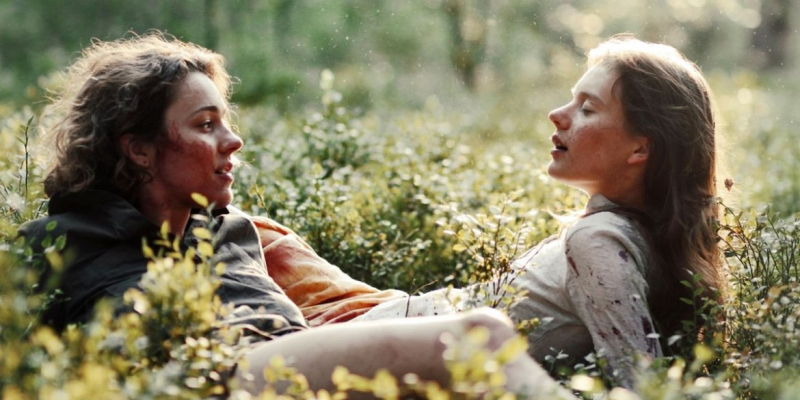
Alante Kavaite’s coming-of-age story about a queer teen obsessed with airplanes – and scared of heights – is deeply angsty and breathtakingly gorgeous. The lighting, the aerial photography, the costumes, the score, all make for a sensory experience that places you in the troubled mind of Sangaile. It’s a lovely tribute to the power of feeling truly seen, and an honest reflection on the limitations of love. Sangaile’s self-harm is handled with a fascinating balance of weight and levity. The film doesn’t minimize her mental illness or the severity of her actions, but it also never judges her. She’s a complicated person, right in the middle of the worst period of her life, and she’s trying. Julija Steponaityte and Aiste Dirziute are great as Sangaile and her new love, Auste. They have a chemistry that never quite clicks as we the audience understand their attraction and the limits of their teen summer romance. Sometimes love isn’t meant to last, but the few months we spend with a person changes who we are – who we can be – forever. – Drew Gregory
48. Wild Nights with Emily (dir. Madeleine Olnek, 2018)
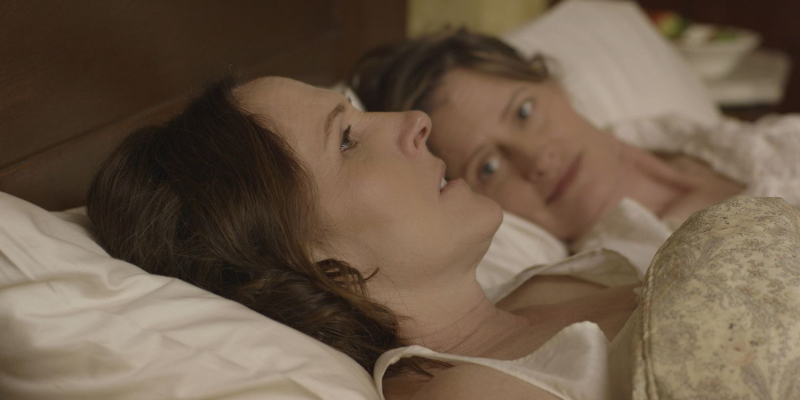
Emily Dickinson’s queerness is really having a renaissance right now! But before Apple TV’s brilliant (and awesomely weird) TV series starring Hailee Steinfeld as the beloved poet wooing her brother’s girl with her poetry and wit, Molly Shannon starred in an even queerer and weirder adaptation of Dickinson’s life. Writer/director Madeleine Olnek’s brand of quirk is singular and she brings all of it to bear on Wild Nights With Emily, challenging not only the deliberate erasure of Dickinson’s gayness from the historical record, but also the idea that Dickinson was a dour, virginal spinster. In Olnek’s view, and in Shannon’s hands, Dickinson is no angsty recluse; she’s silly and compassionate and brilliant and warm and wise and full of life and wonder. Wild Nights is both ridiculous and completely resonant. Truth told just the way Dickinson liked it — at a slant. – Heather Hogan
47. Grandma (dir. Paul Weitz, 2015)
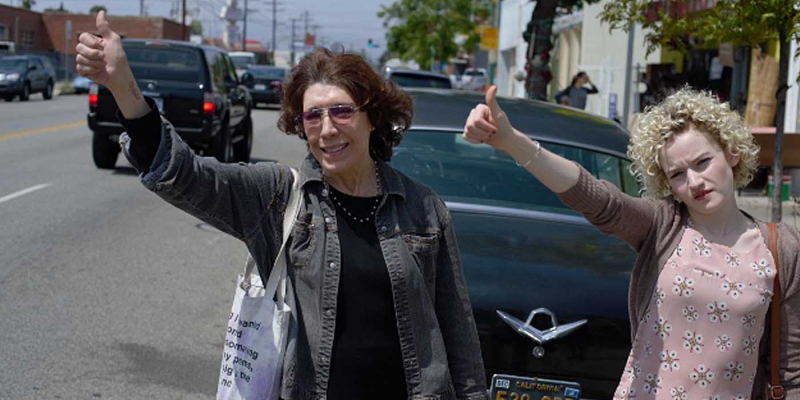
I can’t really explain why I love Grandma as much as I do. Actually, that’s not true — I absolutely can, and I can do it in two words: Lily. Tomlin. If you’re a fan of the lesbian comedian, then you absolutely cannot miss what’s perhaps her finest role. In Grandma Lily Tomlin plays, well, a lesbian grandma (obvious, I know!) who abruptly puts everything on hold to help her granddaughter with a life-altering favor. It’s chopped full with Tomlin’s signature quirky warmth, but also there’s a seriousness underpinning her performance that you don’t always get to see in her other work. Did I mention it also has a guest starring role for Laverne Cox? If you ask me Cox’s comic timing is criminally under appreciated, and in Grandma it’s in fine form. – Carmen Phillips
46. Annihilation (dir. Alex Garland, 2018)
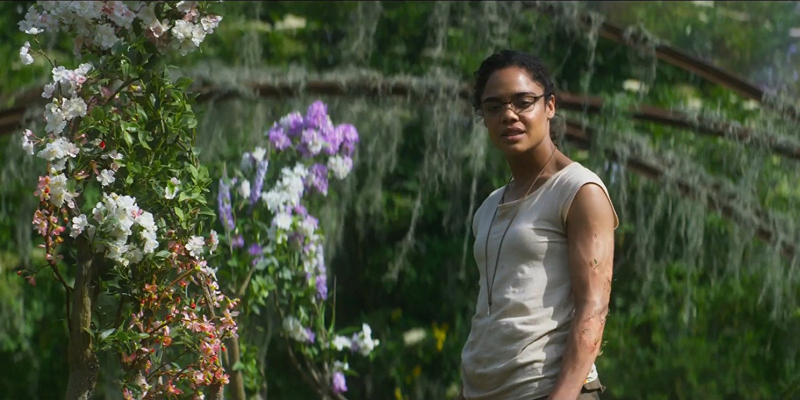
Annihilation mutates several times over the course of its sci-fi-horror story, jumping around in times and tones but ultimately spinning an unsettling and gorgeously constructed narrative on identity and self-destruction. At its climax, the film delivers one of the most haunting, dialogue-free film sequences of the decade, one that lends itself to myriad interpretations. Its score is phenomenal, as are its performances, which ground the movie despite all the sci-fi weirdness unfolding throughout it. Tessa Thompson and Gina Rodriguez bring specificity and stakes to what could easily be set-dressing characters, and the latter harnesses a major tonal shift halfway through the movie with a classic manic horror performance. – Kayla Kumari Upadhyaya
45. Kiss Me (dir. Alexandra-Therese Keining, 2011)
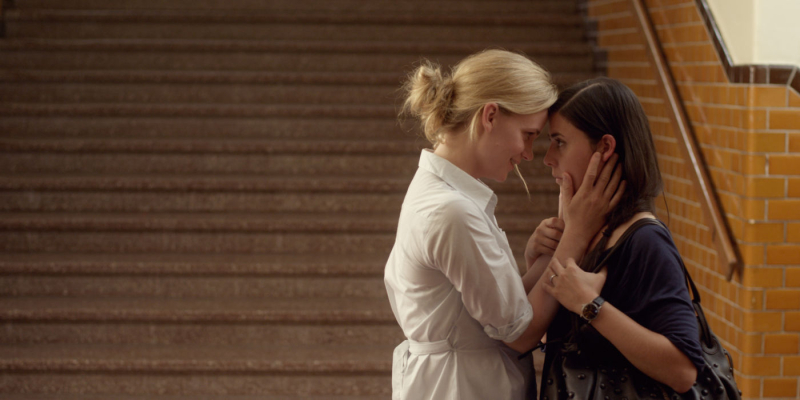
Kiss Me is the kind of lesbian movie we as a community tend to mock. A woman engaged to a man suddenly falls for a lesbian she’s tangentially related to? It’s become its own niche cliché. But the writing and performances in Kiss Me elevate it beyond its premise, or, rather, show why this premise is so attractive to filmmakers in the first place. There’s a truth to Mia’s confusion and Frida’s impatience. The situations that are usually used as plot hurdles instead deepen the characters. Who is this queer person so deep in the closet? Who is this other queer person falling for her? Should they even be together? This is a fun and sexy romance that doesn’t require you to turn off your brain – but might turn it on. – Drew Gregory
44. Can You Ever Forgive Me? (dir. Marielle Heller, 2018)
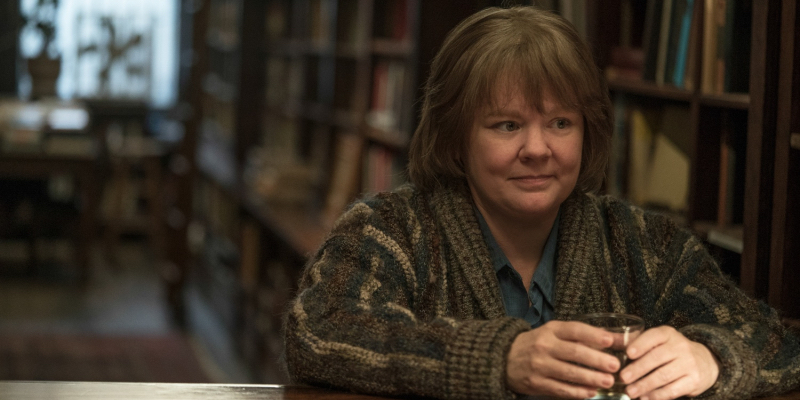
More movies should be as subdued as Can You Ever Forgive Me?, a charming comedy about an incredibly un-charming, real-life protagonist played by Melissa McCarthy in one of the best, most severe roles of her career. The movie lets biographer Lee Israel be acerbic in the way only tortured male artists usually get to be, but it also acknowledges the consequences of her intimacy issues, especially when it comes to her ex-girlfriend (Anna Deavere Smith), new love interest (Dolly Wells), and friend/co-conspirator (Richard E. Grant). Can You Ever Forgive Me? touches on financial anxiety, sexism in publishing, and forgiveness in its sharp but subtle storytelling where the relationship dynamics do the heavy-lifting. It’s a heist movie that feels incredibly low-stakes, and that’s part of its charm. – Kayla Kumari Upadhyaya
43. Atomic Blonde (dir. David Leitch, 2017)

It’s no secret that the plot of Atomic Blonde is incredibly unhinged and, frankly, incoherent, but I’m a true believer in the fact that queer women should be visible in all film canons, and that includes shitty action movies that are nonetheless thrilling, stylish, sexy, and impecably choreographed. Hand-to-hand combat scenes don’t get much better than this, which makes sense given that its director is a stunt performer and coordinator. Atomic Blonde is a rare action movie that’s aware of its characters’ bodies not just in terms of them being capable and attractive but as being fallible, too: How often do we get to see bodies tire and bruise in action? The film falls prey to all sorts of tropes (including That One), but a queer love story that gets to be emotional and hot woven into a flashy world of spy thrills is still, unfortunately, remarkable. And yes, Charlize Theron’s many coats worn in the movie deserve accolades on their own. – Kayla Kumari Upadhyaya
42. Hearts Beat Loud (dir. Brett Haley, 2018)
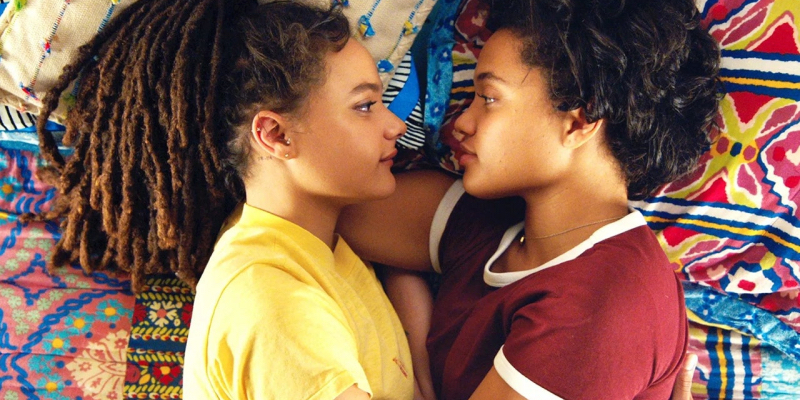
So many coming of age stories about black girls, and about lesbians, so especially about black lesbians, are rooted in trauma. What left me positively enamored about Hearts Beat Loud is that it’s bursting with love, support, and joy. Queer actress Kiersey Clemons lights up the screen as Sam, who’s tackling her last summer before leaving for college and her first real girlfriend, Rose (played by yet another queer actress, Sasha Lane). Their love isn’t marked by parents kicking anyone out of the house, or painful coming out stories. They’re just two weird teenagers who love indie rock music and each other. It’s refreshing, and sweet, and in my mind — a perfect love story, wrapped inside an otherwise imperfect indie film. – Carmen Phillips
41. Summertime (dir. Catherine Corsini, 2015)
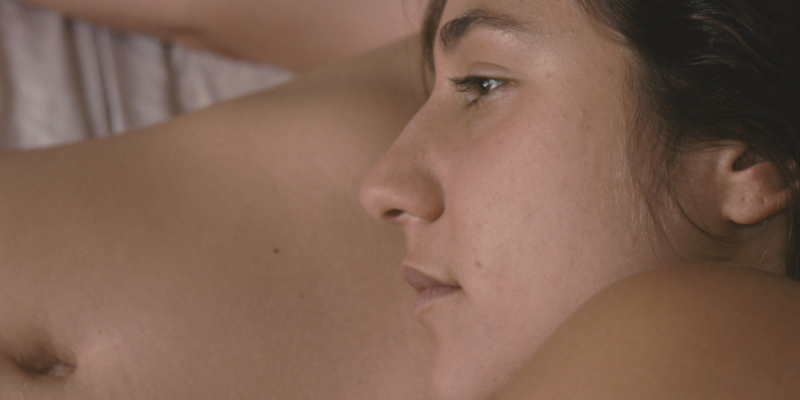
The first time I saw this movie I thought I’d seen a masterpiece. And then I was like wait a minute calm down you’re just horny. Izïa Higelin is one of the hottest people to ever people and watching her fall under the spell of Cécile de France’s confident teacher/activist obviously made me feel things. But maybe that’s enough to qualify it as a great movie! Am I parody of myself that I love the movie about French lesbians bonding over feminism? Yes. But it’s not like the movie isn’t also good in addition to being the best thing ever. It’s gorgeously made and well-acted and does a wonderful job capturing a moment in time and and and – okay fine just let me be horny. – Drew Gregory
40. Dope (dir. Rick Famuyiwa, 2015)
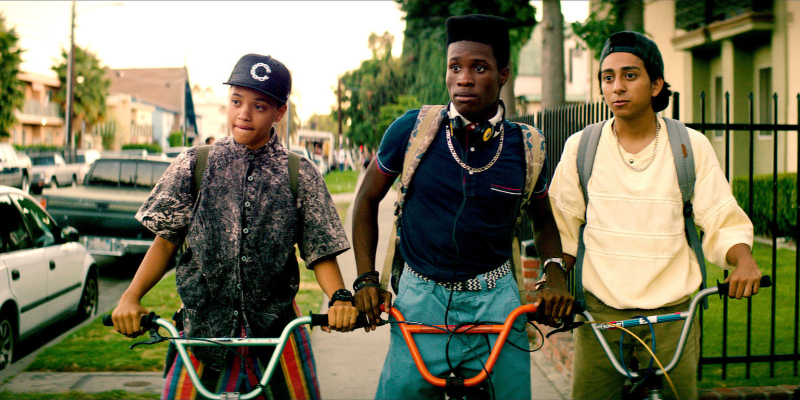
Dope is one of my all-time favorite movies, lesbian or otherwise. It’s one of the tightest scripts of the last decade. The teen heist comedy is unexpected and funny and surprisingly thrilling — which is a lot of compliments from me about a movie with a teenage boy as its protagonist! On top of all those delights, there’s teenage Kiersey Clemons as Diggy, the protagonist’s lesbian best friend. Even at her young age in the film, you can tell she’s already a natural on screen. She steals the camera’s focus without even trying. Also, it’s worth mentioning, the black masc lesbian costume styling in this film? Top notch. – Carmen Phillips
39. The Girl with the Dragon Tattoo (dir. David Fincher, 2011)
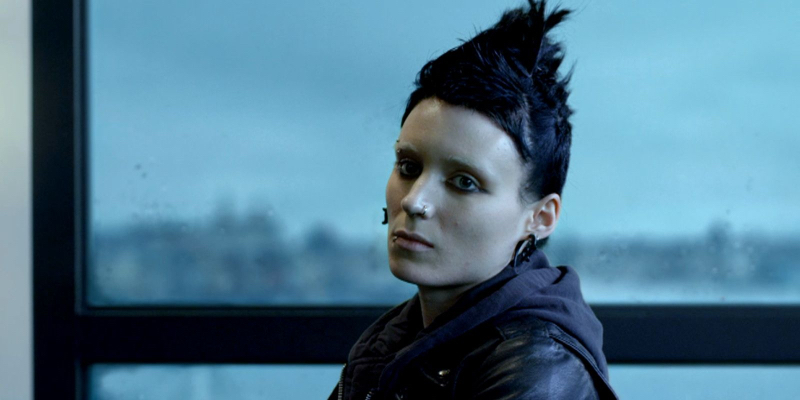
There have been other female action heroes — from Pam Grier’s Foxy Brown to Gal Gadot’s Wonder Woman — but few have captivated audiences quite like Lisbeth Salander. Starting with Stieg Larsson’s opening salvo in the Millenium series to the Swedish film to the 2011 David Fincher adaptation, I’m hard pressed to recall another female action hero that’s generated that much fervor on her own.
Stepping into Lisbeth Salander’s boots is an unenviable task but Rooney Mara rises to meet the challenge. She is astounding as the pierced, bisexual, tattooed hacker recruited by disgraced journalist Mikael Blomkvist (Daniel Craig) into investigating the Vanger family. Fincher’s decision to structure the film into five acts — rather than the usual three — requires Mara to carry more of the film’s load: balancing being the badass who fuels the movie’s action sequences and enigmatic enough to keep your attention during Dragon Tattoo‘s procedural parts. She earned every bit of that 2012 Oscar nomination. – Natalie
38. Eva + Candela (dir. Ruth Caudeli, 2018)
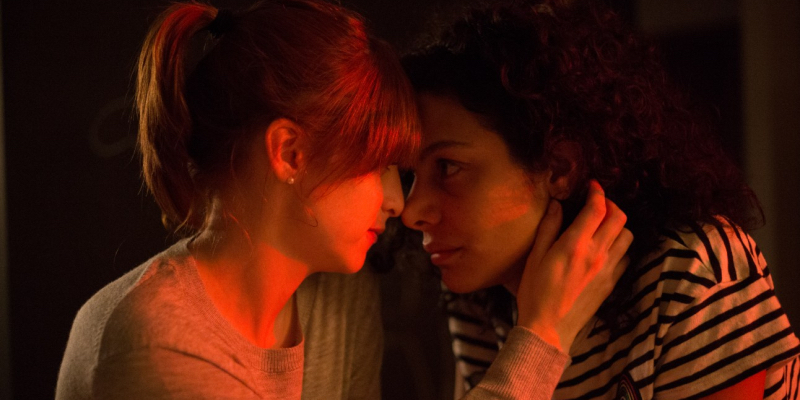
There certainly is no shortage of lesbian romances where things don’t work out – internalized homophobia, externalized oppression, sickness, murder, suicide. But bless Ruth Caudeli’s debut feature for showing our heartbreak the way it usually occurs in all its messy emotions. Most queer women don’t break up because of queerness. Most breakup because God fucking damnit sustaining a relationship – years with another person! years! – is very, very difficult. Silvia Varón and Alejandra Lara are incredible as Eva and Candela as we watch them fall in love and out of love and back in love and out of love, trying so hard to make things work, because they love each other. Truly, they do. It’s a relatable and painful movie that celebrates love in all its impossibilities. And it’s a delightful announcement of a new queer filmmaker who has decades of great films ahead of her. – Drew Gregory
37. Bit (dir. Brad Michael Elmore, 2019)
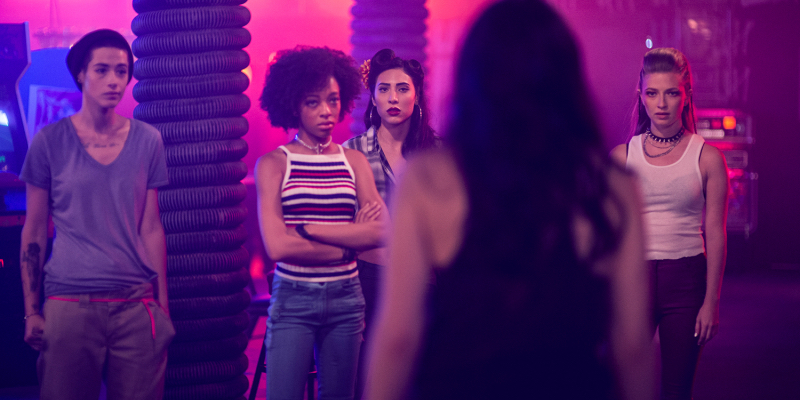
If you’re not a trans lesbian, like I myself am so lucky to be, you may not fully be able to grasp the rarity of this low-key vampire movie. There are only two trans women leads on this list and the other one ends up with a man. While the decade has shown incredible progress for cis lesbians, trans lesbians are still more or less non-existent on our screens. And yet, there is Bit, where Nicole Maines joins a group of lesbian separatist vampires! It’s fun, it’s sexy, and it’s made with a casual touch never weighed down by the uniqueness of its representation. It’s not a perfect movie, but I treasure its existence, and I hope it gets a proper release soon. I’ve never seen my romantic life on a movie screen. Not fully. But there’s a scene in Bit that comes the closest; that doesn’t require me to ignore my transness or my gayness. The only difference between this movie’s meetcute and my own is usually when I kiss someone it doesn’t end with them sinking their teeth into my neck. Usually. – Drew Gregory
36. Hooters! (dir. Anna Margarita Albelo, 2010)
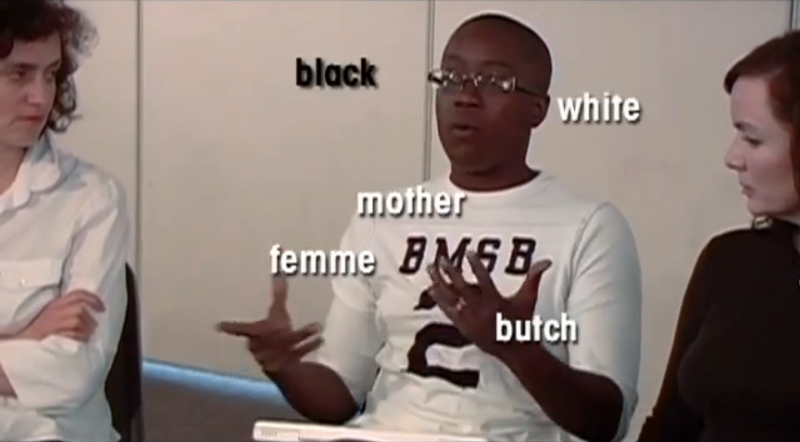
Part behind the scenes featurette, part treatise on the state of lesbian cinema, Anna Margarita Albelo’s making-of documentary about Cheryl Dunye’s The Owls is a remarkable work of art in its own right. With sharp interviews and cinema verité gold, Albelo captures a debate around how we present ourselves as a community. Generational divides abound in discussions of gender, sexuality, and filmmaking. Queer culture shifts so rapidly it’s a treat to have this document of a specific period of time.
After six years way from filmmaking, The Owls was a return for Dunye, an attempt to prove that independent lesbian cinema was still possible in a landscape increasingly focused on respectability. But it’s Albelo’s examination of the moment that proved this to be true. Her signature sense of humor and formal recklessness combined with insight from Dunye, Guinevere Turner, and a very young Rhys Ernst, make for the rare movie about movies that’s really about so much more. – Drew Gregory
35. Lyle (dir. Stewart Thorndike, 2014)
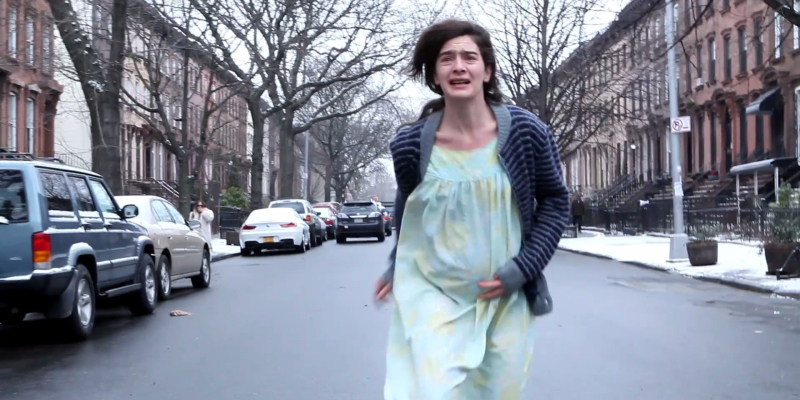
It’s unnecessary to say that Stewart Thorndike’s fierce horror movie is more than its pitch – what if Rosemary’s Baby was gay? It’s unnecessary, because the film doesn’t settle in that premise and it doesn’t go beyond it. Instead it dives deep into the thematic mess that question raises. I’m still not sure what the film is saying, and I’m not sure it’s really saying anything. It’s just asking questions we don’t ask; expressing feelings often left unexpressed. And as an experience it’s an absolute ride. It’s a truly horrifying movie with a desperate central performance from Gaby Hoffman and an ominous supporting performance from Thorndike’s ex Ingrid Jungermann. Stewart Thorndike discussed wanting to make a trilogy of horror movies and I am very upset that she hasn’t been given the money to do so! Somebody give Stewart Thorndike some money! It’s been five years and I want more work from her! Are you, dear reader, a film financier?? If so, give Stewart Thorndike money right this minute! – Drew Gregory
34. Codependent Lesbian Space Alien Seeks Same (dir. Madeleine Olnek, 2011)
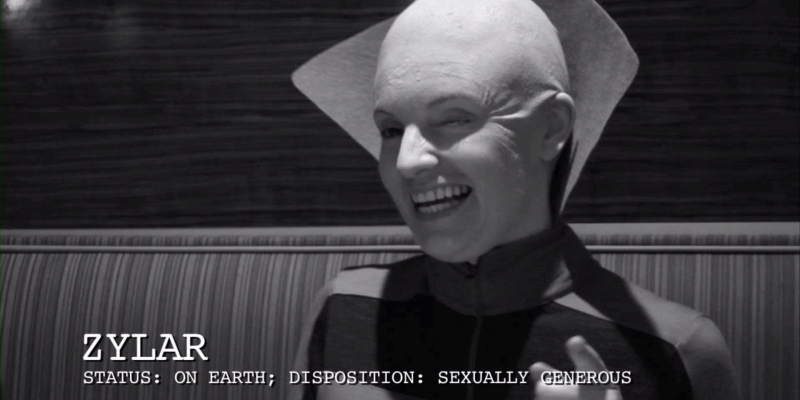
This bizarre and hilarious comedy is a tribute to lonely lesbians across the galaxy. Following the pursuits of three aliens sent to Earth to get their hearts broken so they’ll stop feeling so much, Codependent Lesbian Space Alien Seeks Same is painfully relatable even amidst all its silliness. The movie shows that there’s someone out there for every misfit – you may just have to journey to a new planet to find them. Most of the genre films on this list are not made by queer women, so it’s a delight that Olnek leaned into her budgetary restraints showing all you really need for sci-fi is commitment. And this sure does have commitment! – Drew Gregory
33. In Between (dir. Maysaloun Hamoud, 2016)
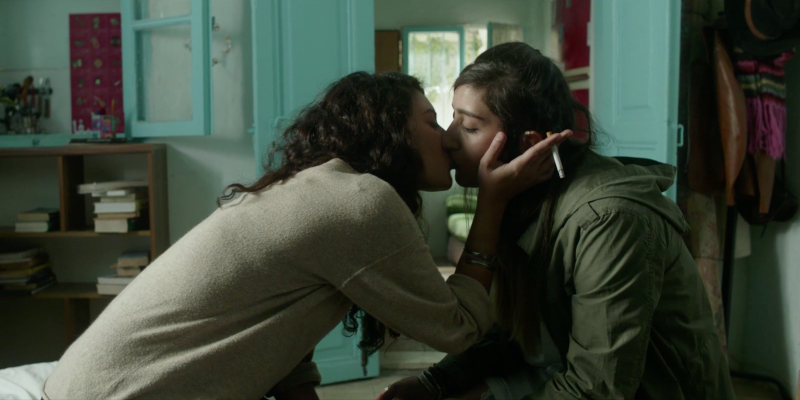
I love this movie with a specific passion even my excitable self rarely feels. There’s just something about its trio of stubborn women – Leila, Salma, and Nour – that feels so familiar to me, facets of my own personality, pieces of others I admire. It’s such a gift to spend time with these people watching them push against their oppression finding love and connection in partners, each other, themselves. The word feminism is thrown around a lot of in film criticism these days, but Hamoud’s film feels feminist in a pure and personal way I rarely see. This is a film about the occupation of Palestine, about patriarchy, about homophobia, and it is a film about surviving. That doesn’t mean simply living through the day – though sometimes that’s certainly all we can manage – but dancing and eating and fucking and loving. Tell the assholes to fuck off and look hot while doing it. Care for each other when it’s all too exhausting. I’m so grateful to Hamoud and the lead actresses – Mouna Hawa, Sana Jammelieh, and Shaden Kanboura – for making such a remarkable film that I’m certain will only grow in esteem in the decades to come. – Drew Gregory
32. Black Swan (dir. Darren Aronofsky, 2010)
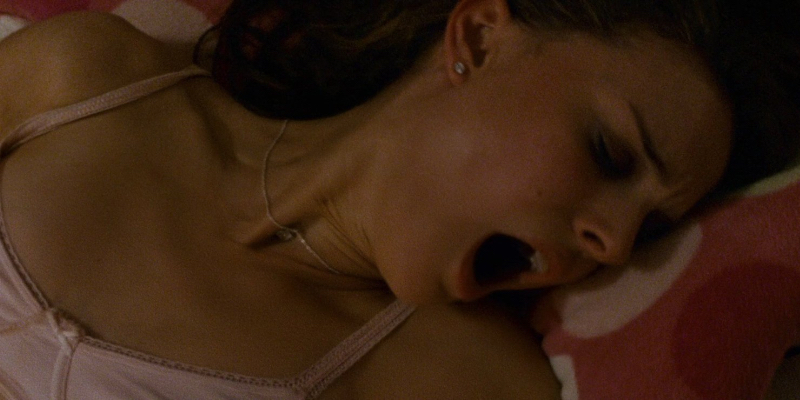
Frenetic yet vulnerable, sexy yet haunting, Black Swan is a nightmarish ballet of mommy issues, power struggles, and polarities. It’s the classical ballet Swan Lake — on poppers. Nina (Natalie Portman) and Lily (Mila Kunis) diverge in their approach to the artform: Nina is too technical and rigid for the likes of choreographer Thomas (Vincent Cassel), while Lily is an unpredictable firecracker. When Thomas intentionally shatters boundaries between the professional and the personal, Nina unravels, unsure of what’s real and what isn’t. Use of the fantastic in the movie is just right — sparse enough to shock but a consistent thread in the movie’s visual storytelling. Some of its more horror-leaning images are the kind that stay with you for years. – Kayla Kumari Upadhyaya
31. Thelma (dir. Joachim Trier, 2017)
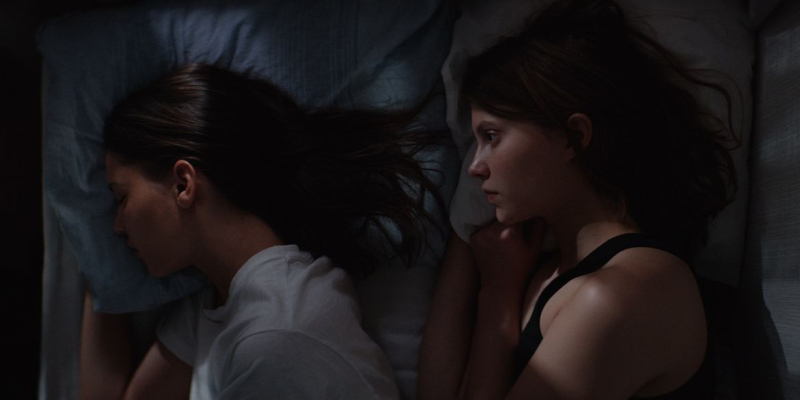
Thelma’s magic lives entirely in its camerawork and editing. Mesmerizing visuals make up for the wobbly plotting and provide a clear throughline. Thelma wraps an X-Men-like narrative in avant-garde horror dressings, and the result is quite lovely. Raised by oppressive, strictly Christian parents, Thelma’s first taste of kindness and acceptance comes from her fellow classmate Anja, whose affection sets off a sexual awakening for Thelma. Her burgeoning supernatural abilities reflect her trauma but also her strength, and there are touches of Carrie throughout the Norwegian-language film. It’s a slow-burn horror about desire and control, and it ends on a very dark, twisty note. – Kayla Kumari Upadhyaya
30. Boy Meets Girl (dir. Eric Schaeffer, 2014)
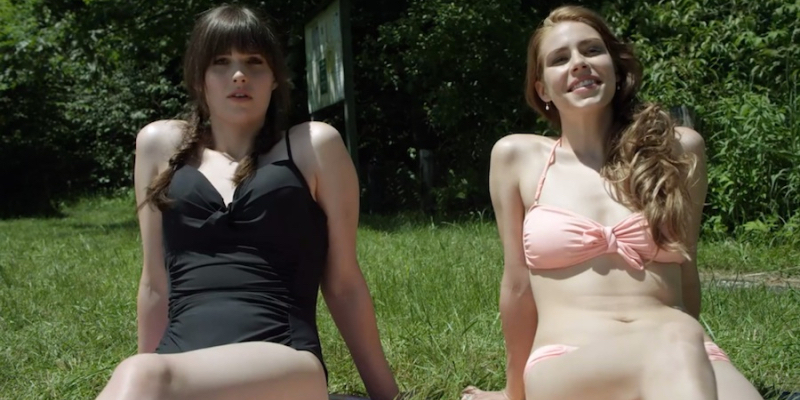
People ask me about dating as a trans woman with a grimace on their face. Their tone – or, on occasion, their words – suggest I might always be alone. This is absurd, of course. Trans women have been desired and loved since we’ve existed which is forever. But it’s true that there are minimal examples of this in media. Looking at the landscape of trans representation – especially in 2014 when Boy Meets Girl came out – one might think we can only be sexless or sex objects.
This is all to say – the saccharine romance of Boy Meets Girl is a fucking gift. I love the messy love quadrangle Ricky gets herself into and I love that it all gets wrapped up in a nice bow. I don’t even mind that she ends up with the boy! Well, I don’t mind it much at least. We still get a sex scene – A SEX SCENE – between Ricky and Francesca that’s sweet and silly and really, really hot. But beyond representation, the movie works as well as it does because Michelle Hendley is an incredible actor. She is a full-on movie star in appearance and charm and endless talent. Considering the number of cis queer women filmmakers who have made work this decade, it’s just a bit disappointing that the only trans women leads on this list were brought to us by two cis straight men. Cast a trans woman in your semi-autobiographical cliché lesbian romcom! I promise you a hungry and grateful audience. – Drew Gregory
29. Signature Move (dir. Jennifer Reeder, 2017)
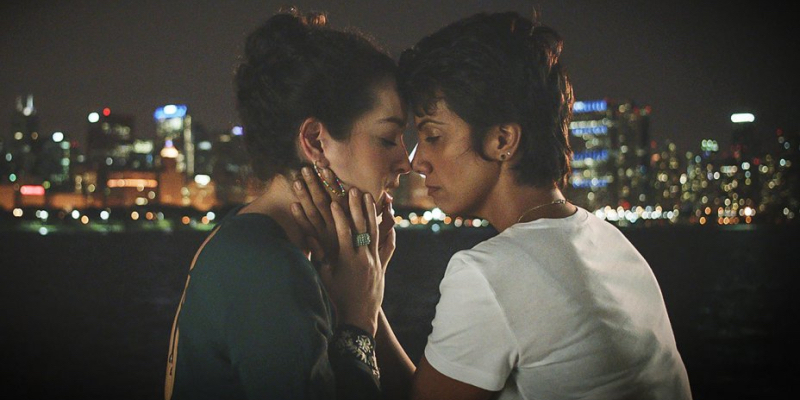
Zaynab, a 30-something Pakistani Muslim lesbian from Chicago who’s been living with and taking care of her recently widowed mother, finds herself falling quickly and unexpectedly in love with Alma — the Chicana bookshop owner whom she meets one night at a bar. Of course, Zaynab’s mother doesn’t even know she’s gay, and Alma has little interest in dating someone in the closet, so complications arise almost right away. There’s a lot about this movie that sounds predictable when you write it down, but on film it’s captivating. A lot of that has to do with not only the cultural authenticity and attention to detail, but also Zaynab’s personal obsession with Lucha-Style Mexican wrestling. I promise you’ve seen nothing like it. (Oh by the way, it was made by lesbian Pakistani filmmaker Fawzia Mirza, so when I say that authenticity and unexpected voice is at the core of this film, I absolutely really mean it.) – Carmen Phillips
28. Daddy Issues (dir. Amara Cash, 2018)

There is an unlikely love triangle at the center of Amara Cash’s debut – a young artist, her influencer crush, and the influencer’s drug-addicted sugar daddy. But that’s only the beginning. This is a bonkers movie filled with bright colors, pop montages, and ever-heightening emotion. It also happens to be one of the most adorable movies on this list. That’s right, amidst all the insanity, and all the sex, is the story of a young woman trying to find herself amidst first love. Sweet doesn’t have to mean safe. Sweet doesn’t have to mean respectable. Straight people don’t get to determine how we tell our stories and it’s a pleasure to watch Cash’s declaration of this fact. A first kiss can be magical. But so can a first fingering. – Drew Gregory
27. A Date for Mad Mary (dir. Darren Thornton, 2016)
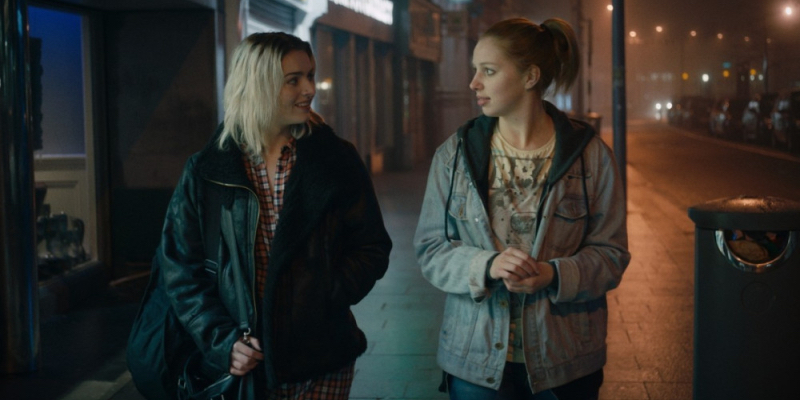
If you combined all my adolescent crushes into two people it would be A Date for Mad Mary romantic leads Seána Kerslake and Tara Lee. But that’s not the only reason I love this Irish romantic dramedy. I love this movie for its heart and its humor and its totally fresh take on the in love with your straight best friend trope. Kerslake’s titular character has no idea she’s in love or that she’s even queer. She just thinks she’s frustrated with her soon-to-be-married friend Charlene for being so absent, especially when Mary just spent months in prison. The fact is Mary doesn’t know who she is. She doesn’t know why she’s so angry, why she keeps fucking up and hurting people, and why she can’t find a date to this wedding. It doesn’t all come back to her queerness – but a lot of it does.
Enter videographer/singer Jess. The chemistry is immediate and even if she’s not sure why, Mary just really likes being around her. Unfortunately, Mary keeps going back to Charlene. Mary’s growth throughout the movie is strained and troubled, but Kerslake finds nuance in every moment. Mary becomes an easy character to root for even if you aren’t painfully attracted to her – which, again, to clarify, I am. – Drew Gregory
26. Shakedown (dir. Leilah Weinraub, 2018)
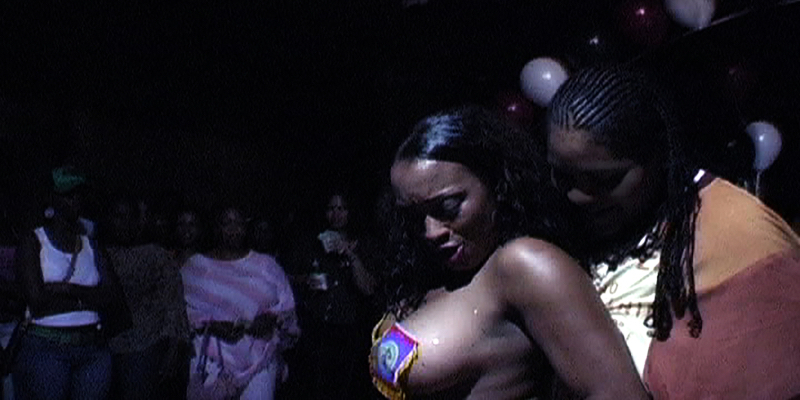
Shakedown is a documentary exploring early-aughts Los Angeles via the lens of the underground black lesbian strip club from which the film gets it name. For a documentary, which is a genre most often associated with dry facts on screen, it’s also deceptively seductive — playing with the same pulls of fantasy that dancers are also selling to their customers. It’s so incredibly sexy and you can’t take your eyes off the line up of both femme and stud performers on stage (or their lives behind the scenes once the music stops playing.) – Carmen Phillips
25. Bessie (dir. Dee Rees, 2015)
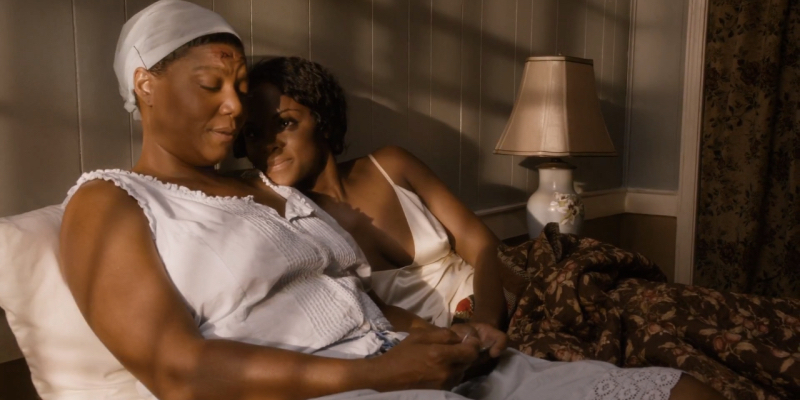
In 2002, Queen Latifah scored her first Oscar nomination for her turn as Matron “Mama” Morton in the film adaption of Chicago. For someone who had, until then, built a career primarily on sitcoms and an eponymous talk show, the Supporting Actress nod highlighted that Latifah was capable of so much more. In the years since few movies have given Latifah the opportunity to earn that critical acclaim but Bessie did. Latifah embodies blues legend, Bessie Smith, in some of the best work of her career…and for it, she earned an Emmy nomination (Best Actress in a TV Movie) and her first Emmy win (Best TV Movie).
Bessie is rare in its depiction of sexuality: showcasing both Bessie Smith’s bisexuality and polyamory and Ma Rainey’s (played by a scene stealing Mo’Nique) unapologetic lesbianism. – Natalie
24. Valencia (dir. various, 2013)
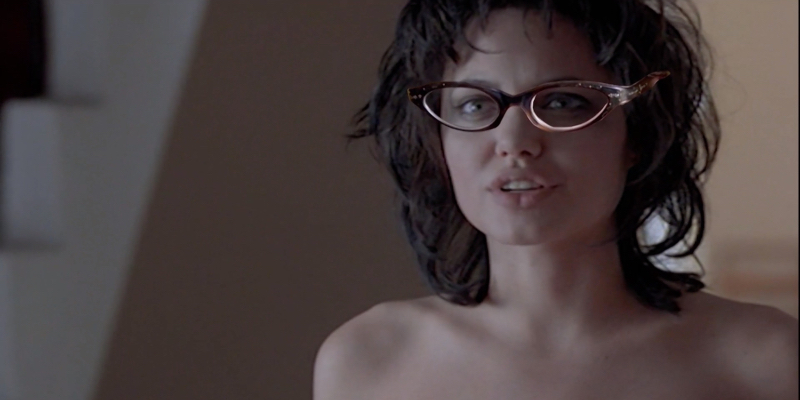
Billed as a “collaboration between a national community of queer filmmakers” this omnibus adaptation of Michelle Tea’s novel is one of the queerest, transest movies you’ll ever see. Produced by Clement Hil Goldberg and including directors such as Cheryl Dunye, Jill Soloway, and Silas Howard, this movie is the cinematic equivalent of a co-op. Every take on Tea’s work is so different, yet the sections complement each other so well. “Michelle” is played by a variety of cis women, a trans woman, a trans man, an animated character, and even Angelina Jolie in Gia but with Tea’s signature glasses superimposed. There’s a reckless freedom – a fluidity to gender and sexuality and art – that makes this a landmark work of queer cinema. — Drew Gregory
23. Disobedience (dir. Sebastián Lelio, 2017)
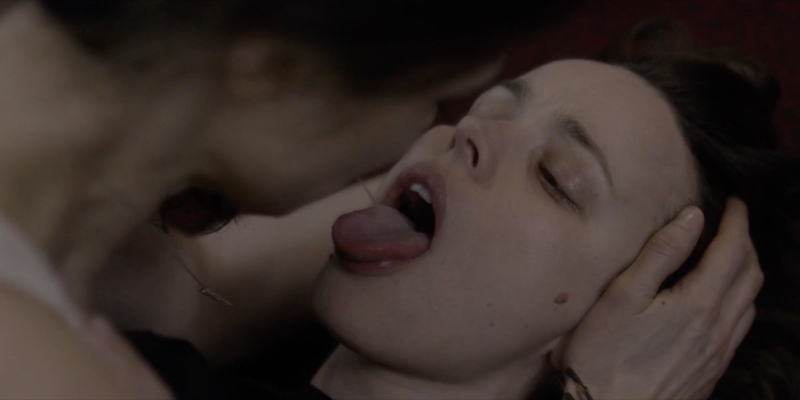
A quiet contemplation of faith, desire, and community, Disobedience looks at the disparate ways childhood lovers Esti (Rachel McAdams) and Ronit (Rachel Weisz) contend with the expectations forced on them in their Orthodox Jewish upbringing. Ronit left, and Esti stayed, and when a funeral brings Ronit home, she’s forced to face the ways she hurt those she left behind and grapple with why Esti remains. The reunion of two lovers sparks scintillating chemistry that is full of familiarity and a long history of emotions. Yes, the spitplay is hot, but the specific way it happens indicates that this is far from the first time it has happened, which makes it all the hotter. – Kayla Kumari Upadhyaya
22. Circumstance (dir. Maryam Keshavarz, 2011)
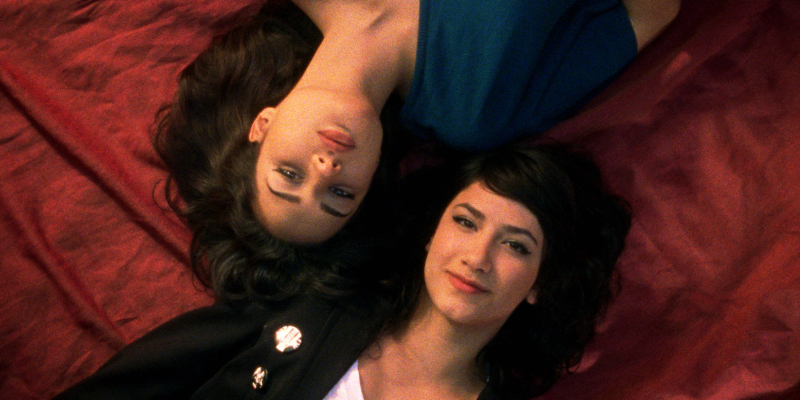
By the time I watched Nikohl Boosheri’s breakout role, I’d already fallen in love with her twice. First, in Meera Menon’s Farah Goes Bang where she plays a woman trying to lose her virginity on the John Kerry campaign trail, and then on the first season of The Bold Type where she plays the devastating Adena El-Amin who yanks Kat Edison out of the closet. There’s something about the easeful way Boosheri can alternate between seductive seriousness and goofy charm that is frankly cruel when paired with her physical beauty. Woah. Okay. I really must apologize to Maryam Keshavarz for getting too distracted by my horniness to give this legitimately masterful work of cinema its proper praise. But you know what? I don’t think she’d mind. Because one of the reasons Circumstance is so great is that even though it’s telling the harrowing story of homophobic oppression in contemporary Iran it never shies away from being sexy. The contrast Keshavarz is drawing between her characters’ private life and public life – the life they want versus the life they’re forced into – is emphasized by sex. It’s important we feel their intense want for each other, so it’s not merely theoretical when it’s taken away. Boosheri and her co-star Sarah Kazemy are so incredible and so beautiful and so electric together, it’s painful to watch them pulled apart. But more importantly does anyone know if Nikohl Boosheri is queer IRL and interested in dating a trans writer with curly hair and an encyclopedic knowledge of film? Asking for a friend. – Drew Gregory
21. Mosquita y Mari (dir. Aurora Guerrero, 2012)
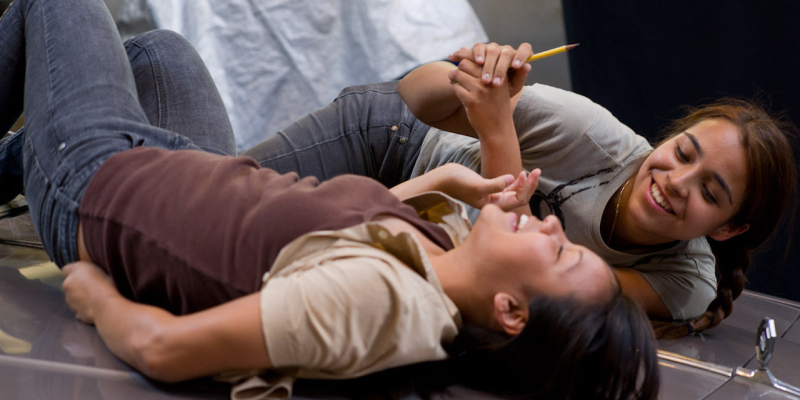
Mosquita y Mari is such a sweet retelling of kind of the romantic friendships that any nerd who’s ever had intense feelings towards “the bad girl” at school that you couldn’t quite explain, but consumed you nonetheless, will instantly relate to. Two Chicana high schoolers, Mari (Venecia Troncoso) and Yolanda (Fenessa Pineda), form a bond that’s more than friendship, but also stretches beyond the vocabulary they have at the moment for girlfriends or queerness. What makes Mosquita y Mari stand out is not only how authentic it is to Latinx and Chicanx families and coming of age (though that is a big part of it) — but also how the film finds a way to explore a queer teen romance that’s slippery and ambiguous. Not all of us come out clearly or in a “straight” line, Mosquita y Mari captures that experience like few others can.– Carmen Phillips
20. Blockers (dir. Kay Cannon, 2018)
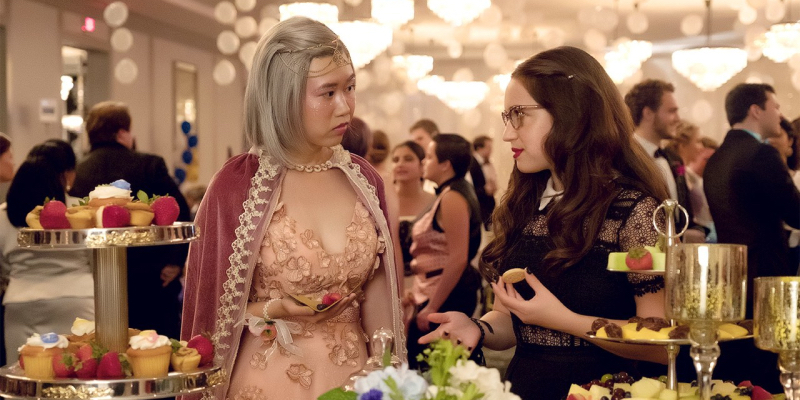
Blockers is a prime example of a movie harmed by the initial reactions to its promos, which made it seem like a sex-negative comedy about parents attempting to make sure their teen girls never have sex, when in reality, the film is the ideological opposite of that. Yes, these parents are overbearing, but the movie is critical of that, creating complex, convincing arcs for each of the parents as well as the teens. Its coming-out story is cute and grounded, featuring a very sweet father-daughter scene, supportive friends, and nerdy romance. The whole cast is great down to the tertiary characters. – Kayla Kumari Upadhyaya
19. A Simple Favor (dir. Paul Feig, 2018)
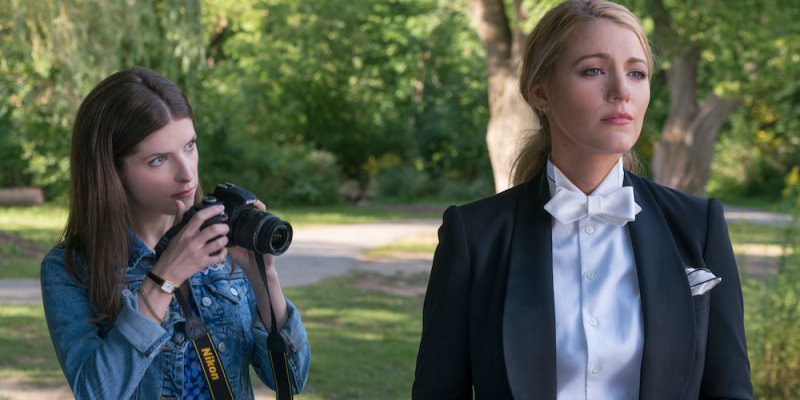
I saw this movie late and was so sure it had been hyped up by my friends to be gayer than it actually was so I was absolutely delighted to learn that it’s actually quite gay and not just in a “Blake Lively in a tux reminded me what being gay is all about” way. It of course was extreme and campy and truly wild but it was kind of the perfect metaphor for that feeling you get when you’re first realizing you’re into girls but can’t tell if you want to be her or date her or both and your brain is in an action movie while your heart is in a romance and you forget which way is up. – Valerie Anne
18. Booksmart (dir. Olivia Wilde, 2019)
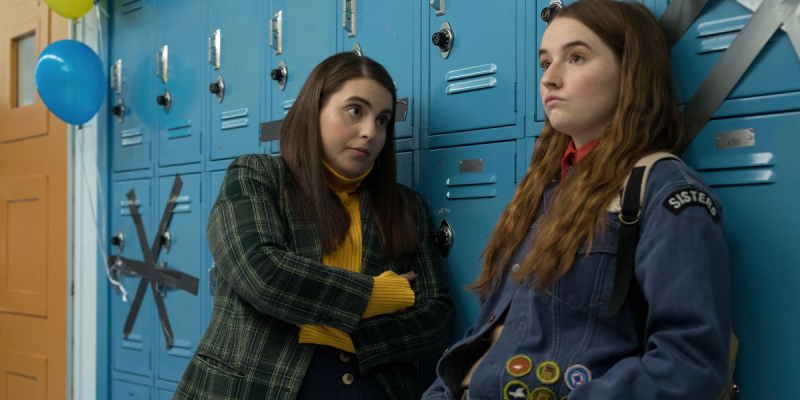
Booksmart is the buddy comedy I never knew I always wanted. Two teenage girls who love each other and are weird and goofy and smart and who aren’t fighting over boys or an mis-overheard sentence or a rumor. It was fun and funny and emotional and gay in that real, awkward, funny way that gayness sometimes is. I don’t remember the last time a movie made me laugh that hard for that long, and it’s always refreshing to watch female friendships that are so obviously and refreshingly written by women. – Valerie Anne
17. Rafiki (dir. Wanuri Kahiu, 2018)
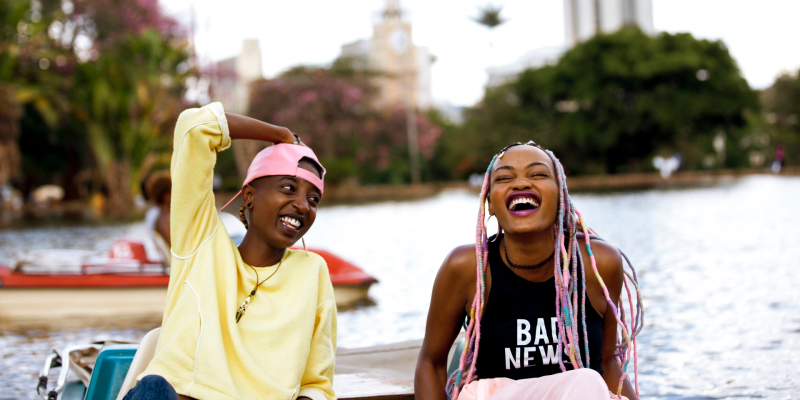
In her 2017 TED talk, Rafiki‘s future director, Wanuri Kahiu, ushered in a new genre of African filmmaking called “AfroBubbleGum.” She had grown tired of African films that dealt with the war, poverty, devastation and AIDS; instead, she wanted to “curate, commission and create art that celebrates fun, fierce and frivolous Africa.” A year later, her film Rafiki — the incredible adventure of two Kenya girls in love, if you will — became the first Kenyan film to screen at the Cannes Film Festival.
Even as the film grapples with Kenya’s homophobia, both on-screen and off, Rafiki fulfills Kahiu’s promise. AfroBubbleGum seeps out through the film’s use of bold color — watch the progression of pink! — and a vibrant soundtrack. But Rafiki‘s ultimate strength lies in its stars, Samantha Mugatsia and Sheila Munyiva, who are magnetic as Kena and Ziki. – Natalie
16. Suicide Kale (dir. Carly Usdin, 2016)
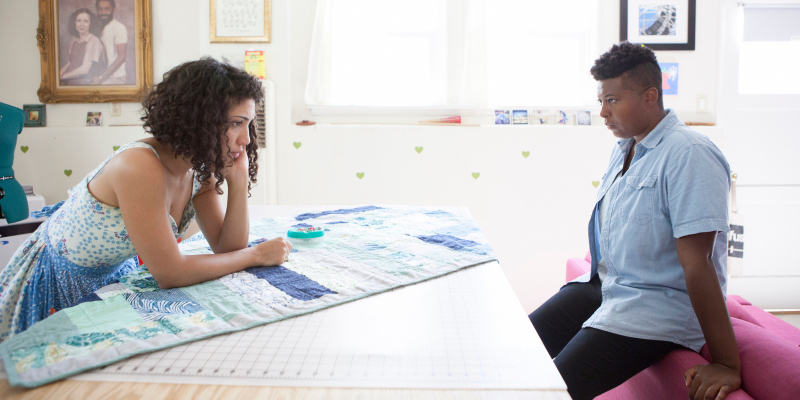
A dark comedy filmed in natural light, Suicide Kale is queer in its marrow, centered on two queer couples at different stages in their relationships and made by a team of queer creatives (Brittani Nichols penned the very funny, natural script, and Carly Usdin directs). It takes place over the course of just one home meal, but the suicide note its title references unearths relationship drama, tension, and complicated emotions that give way to a larger story about intimacy and trust. It feels special from start to finish. – Kayla Kumari Upadhyaya
15. Princess Cyd (dir. Stephen Cone, 2017)
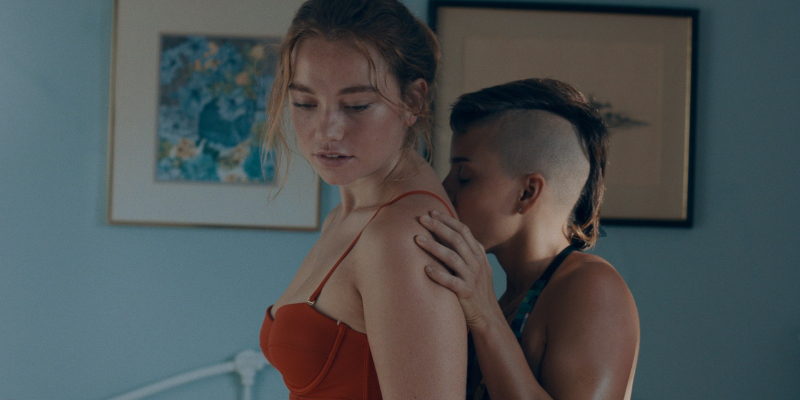
The first time I watched Princess Cyd I watched it again a few hours later. My girlfriend at the time got home from work and I was bursting with a certain chaotic enthusiasm anyone who knows me knows too well. I insisted it would just be easier to show her than try and articulate why I’d fallen so deeply and completely in love with this movie. So we watched it! And she understood! How could she not? Because Princess Cyd is so, so good.
The mostly non-existent plot is Cyd decides to spend a summer with her novelist aunt Miranda. As she explores her casually pansexual desires – most significantly with hottie barista Katie – she also reflects on the memory of her mother and learns to respect Miranda’s less sexual approach to life. The experience of watching the movie is like being invited to one of Miranda’s living room readings. The experience of watching the movie is like being a part of one of Cyd’s trysts. The experience of watching the movie is like remembering the best summer of your life that you didn’t even realize was the best summer of your life until years later you think back on a small moment that shouldn’t mean much and realize it means everything. Every time I open Netflix I hover the cursor over Princess Cyd tempted to sink back into its world. After texting one friend about this movie for the millionth time she said: “I feel like instead of an eternal flame at your grave should just be a speaker of your voice wailing PRINCESS CYD IS SO GOOOOOD on repeat. Forever.” Add it to my will. – Drew Gregory
14. The Favourite (dir. Yorgos Lanthimos, 2018)
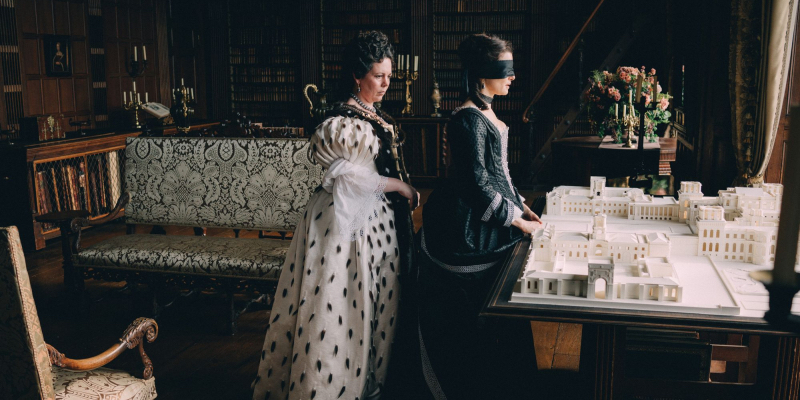
After I saw The Favourite for the first time, I spent the next 24 hours asking myself what in the world I’d watched. I don’t just mean director Yorgos Lanthimos’ surreality and fishbowl lenses that have been discussed at length by straight critics everywhere for the last two years. I mean also, “Did I just witness both Rachel Wesiz and Emma Stone fingerbang the Queen of England?” (Yes, and not even, in my opinion, in their best ever gay roles.) The other thing that really sets this period piece apart is how damn messy all three of its leads are. Lady Churchhill, Abigail, and The Queen herself. But even their nastiest actions are clearly motivated by a desperation to survive in a world that would otherwise strip them of all agency and leave them powerless and penniless. Lanthimos resists the seemingly collective urge of all male writers and directors to justify any of of his female characters’ worst behavior, or to punish them for it. No one even gets assaulted. He showcases the full humanity of three entire queer women who fuck and fuck over each other, and aren’t sorry about it. It seems so simple, yet remains revolutionary. – Heather Hogan
13. Mommy is Coming (dir. Cheryl Dunye, 2012)
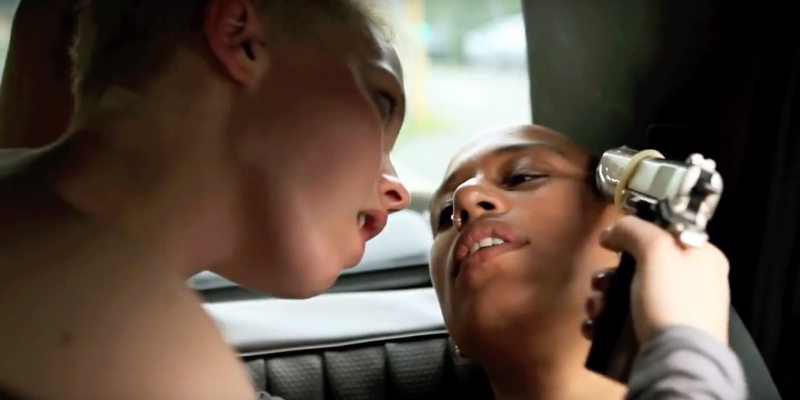
Dubbed the most heterophobic movie of all time by, well, me — Cheryl Dunye’s most recent feature film is a farcical odyssey through contemporary Berlin. With an irreverent sense of humor and committed sense of place, Dunye’s film (co-written with Sarah Schulman) is a sexy and silly good time. It’s a celebration of queer sex in all its forms and a thrilling reminder of Dunye’s importance to queer cinema and cinema in general. It begins with a condom covered gun, ends with some accidental incest, and stops at a sex club along the way. Mommy is Coming is a declaration that queer cinema doesn’t have to assimilate. There’s still a need for work that’s bold and reckless and made just for us. – Drew Gregory
12. The Daughters of Fire (dir. Albertina Carri, 2018)
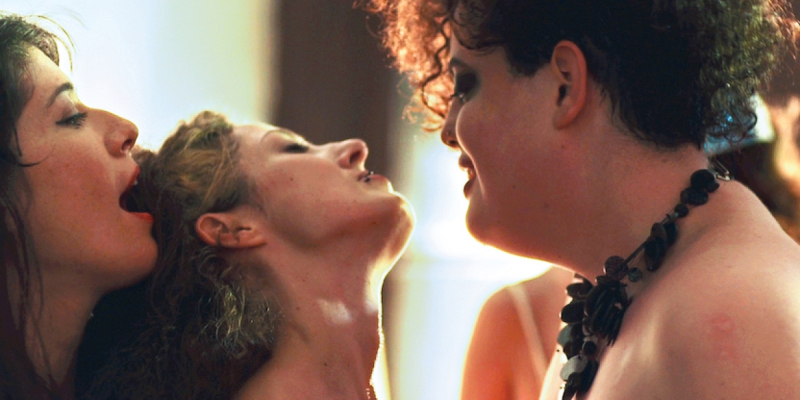
This exploration of the possibilities of pornography answers its own question. Can porn be truly feminist and truly queer? Yes, of course, and this movie is proof. Mostly plotless, this road movie through Argentina follows a lesbian couple as they add more and more queers to their traveling gang of lovers and friends. The cinematography is gorgeous. The narration is poetic. The sex is real and kinky and inclusive. It can be watched in a theatre as a work of art and it can be watched at home to get you off. It’s a treat to live in its utopic vision of queer community and pure desire. – Drew Gregory
11. Second Star on the Right (dir. Ruth Caudeli, 2019)
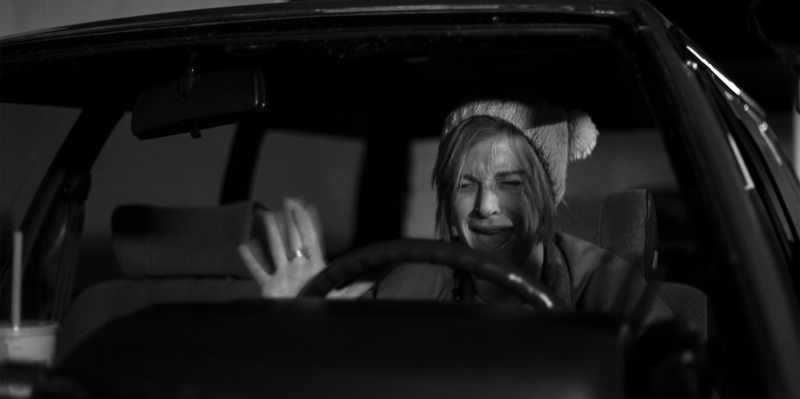
If Ruth Caudeli’s debut Eva + Candela (#38!) showed the promise of a great new filmmaker, her second film – a mere one year later – has the confidence of an artist fully formed. This story of an immature bisexual surrounded by rapidly maturing straight friends is bursting with formal experimentation. There is so much queer creativity in every frame illuminating Emilia’s inner life and various struggles. The black and white cinematography is subtly crafted and the moments of color are magnetic. Silvia Varón – Caudeli’s muse and, based on Instagram, IRL girlfriend – is so fucking good as Emilia. She’s hilarious and painful and always manages to keep us on her side. This is a messy movie in character and plot and style, but I say that as a compliment. Caudeli commits to the mess of her heroine and respects the messes we all sometimes make of our silly queer lives. – Drew Gregory
10. The Miseducation of Cameron Post (dir. Desiree Akhavan, 2018)
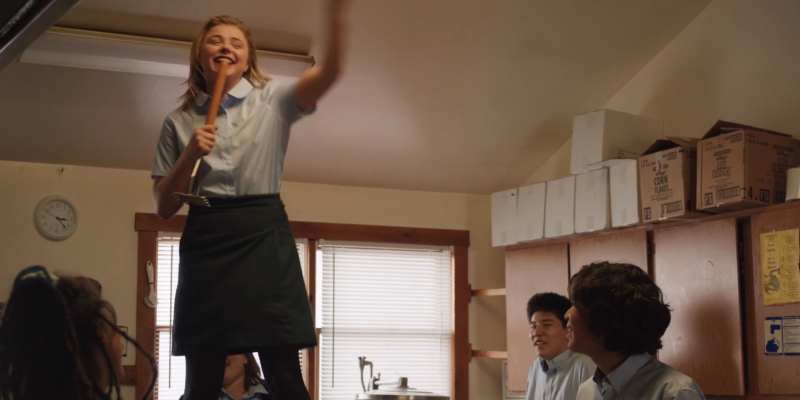
Instead of simply filming Emily M. Danforth’s sprawling novel, Desiree Akhavan created a true adaptation – focusing on the second half, changing the ending, still capturing its essence. Like its source material, Akahavan’s film uses the story of a teen girl’s time at conversion therapy as a larger exploration of the way queer people are brainwashed to doubt our feelings. The headstrong Cameron – an incredibly dykey and just plain incredible performance from Chloë Grace Moretz – is a perfect protagonist as we watch her slowly start to lose a grasp on her reality. Aided by Ashley Connor’s cinematography and Julian Wass’ score, Akhavan’s film is a truly cinematic experience, never afraid to let a moment or an image sit. The sex scenes are long and specific, reminding an audience just how different it is to watch a queer woman coming-of-age movie made by an actual queer woman.
Also the movie is really funny! Is it a serious drama about queer self-hatred? Yes. Does it still have Akhavan’s biting sense of humor? Also, yes. It’s not maudlin. It shows how queer people, even in our lowest moments, find community and joy, make jokes about our oppressors, and keep on going to live another day. – Drew Gregory
9. Good Manners (dir. Juliana Rojas, Marco Dutra, 2017)
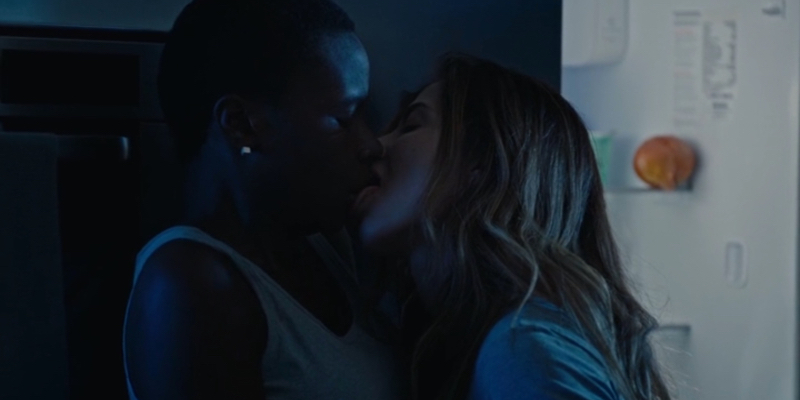
Horror-camp and relationship drama collide in this Brazilian movie that takes its sweet, sweet time building its world and mythology. But that character development and languidity is a welcome change of pace and stakes for what is ultimately a monster movie. Good Manners suffuses that genre with feelings as well as commentary on class, motherhood, and queerness. Isabél Zuaa’s quiet but memorable performance as Clara, a nanny for a rich and famous pregnant woman who she starts a relationship with, is the movie’s backbone, but Good Manners also manages to tackle a lot at once, including a coming-of-age story for its young boy Joel. It’s more complex than the average monster movie, but it also hits all the right notes of the genre with gore and frights. – Kayla Kumari Upadhyaya
8. Certain Women (dir. Kelly Reichardt, 2016)
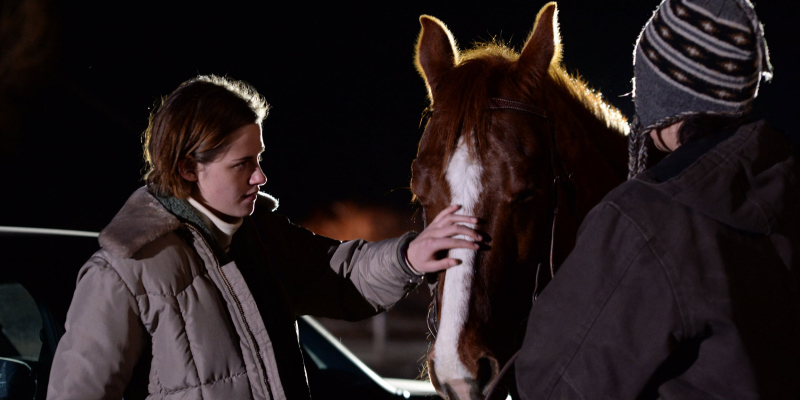
Based on three short stories by Maile Meloy, my favorite of Kelly Reichardt’s many quiet American masterpieces is a tribute to stubborn women. The sections starring Michelle Williams and Laura Dern are heartbreaking and beautiful, but it’s the third section starring Kristen Stewart and newcomer Lily Gladstone that makes me want to scream or crawl within myself and implode. Gladstone plays Jamie, a ranch hand who stumbles upon the law class being taught by Stewart’s Beth. Despite having no interest in law, Jamie keeps returning to this twice a week class to spend time with Beth. It’s less a romance and more a crush. It’s a less a crush and more a window into possibility. Jamie is living an isolated life where she’s surrounded by more animals than people. And the people she does interact with are certainly not queer – and certainly not Kristen Stewart. Of the three women in this movie Jamie is the least outwardly confident. In fact, she’s rather timid. But there’s something about Beth that drives her out of herself and pushes her to take risks and it’s thrilling to witness. This is a melancholy film, but it’s also a celebration of our tiny triumphs, our attempts at something more. – Drew Gregory
7. Dirty Computer (dir. Janelle Monáe and others, 2018)
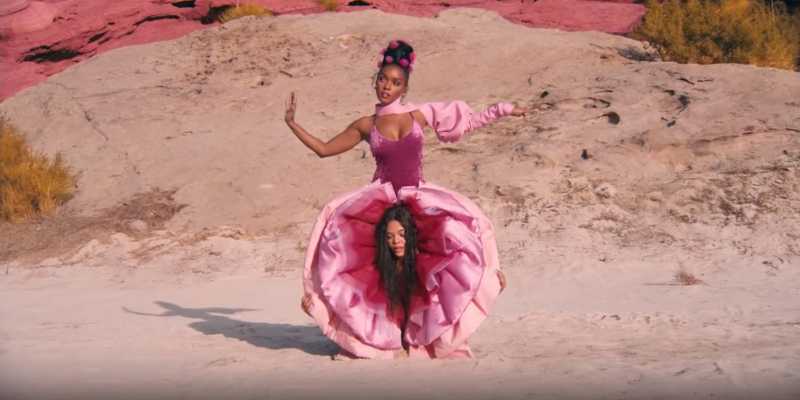
Janelle Monáe has always integrated science-fiction into the stories she tells in her music — dating back to the release of Metropolis: The Chase Suite, released in 2007 — but with the release of Dirty Computer, she took things to a whole new level. With her “emotion picture,” Monáe created a visual compliment to her GRAMMY nominated album, that was a part Westworld, part Eternal Sunshine of the Spotless Mind, part The Handmaid’s Tale and part THX 1138.
But the veneer between science fiction and reality has never felt thinner. In the world Jane 57821 roams and the one where Janelle Monáe lives as a queer black woman, there is a concerted efforts to erase the things that make us “dirty.” Dirty Computer is a call to resist the cleanse and to fight to be “free-ass motherfuckers.” – Natalie
6. Carol (dir. Todd Haynes, 2015)
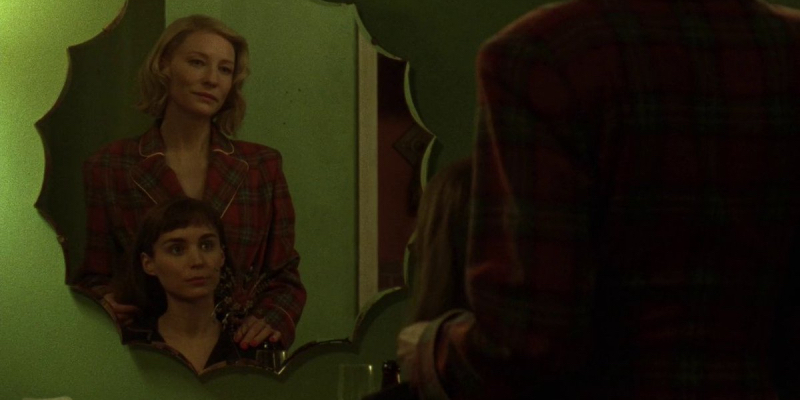
We’ve written more about Carol than any movie ever, and I’d venture to say that the internet at large has written more about Carol than any other lesbian movie ever — yet, somehow, I still cannot believe it exists. You can (and plenty of people do) disagree with me, of course, but I think it’s perfect. I think it’s a perfect film. Here’s a thing a lot of people don’t know: There’s a scene in the script in act one where Therese gives Richard a handjob. Director Todd Haynes did film it, but decided to cut it in editing — because he didn’t want the pleasure of a man to be the center of any experience Therese or Carol have in the movie. And that’s the real delight of the entire thing for me. Yes, it’s a brilliantly filmed and acted story about embracing who you are and the danger and ecstasy of giving into queer desire, but it’s also a story that relentlessly, mercilessly shoves men out of the frame. It invites the audience not to ignore them, but to laugh at them. At the end of the day, that’s why Carol didn’t win any Oscars. “Do you miss Richard?” Carol asks. Therese almost giggles. “…no. I haven’t thought about him all day.” – Heather Hogan
5. Professor Marston and the Wonder Women (dir. Angela Robinson, 2017)
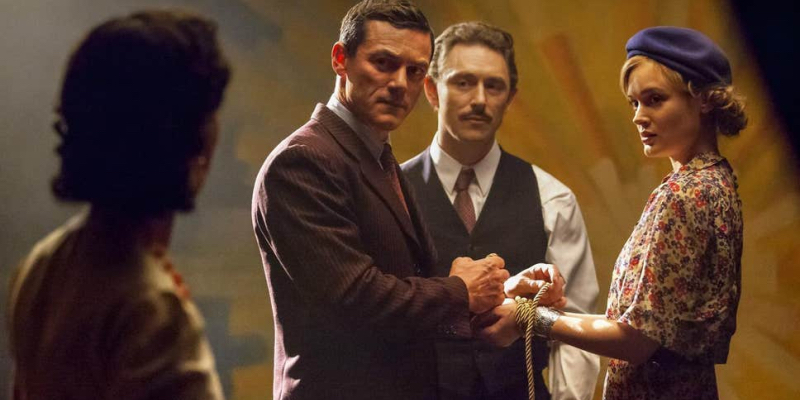
This movie is one of the most stunning movies I’ve ever seen. It’s a celebration of women and breaking the mold and daring to love. It’s heartbreaking and heartwarming and a true celebration of the love between three people in a casual and understanding way. I had heard that Professor Marston was in a polyamorous relationship with the women who inspired the comic but I’ll be honest, I thought the movie would maybe hint at it or mention it in passing; instead, it was the entire heart of the movie. It was dramatic and artistic and smart and also I learned things about science AND about Wonder Woman which really is my nerdy dream come true. I cannot recommend this unexpectedly unabashedly queer movie enough. – Valerie Anne
4. Portrait of a Lady on Fire (dir. Céline Sciamma, 2019)
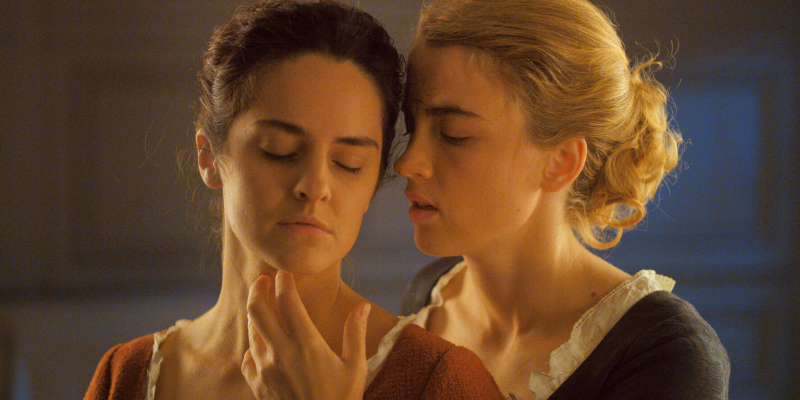
Before I came out, my lesbian viewing was restricted to films I could reasonably watch under the guise of cinephilia. It’s how you end up a scholar of queer film history before ever seeing an episode of The L Word. When Céline Sciamma’s debut film Water Lilies was released I wasn’t sure which category it fell into. The trailer was so completely gay – teenage girls kissing in between synchronized swim routines – but it was beautifully shot and in French so I convinced myself I could watch it. I was enthralled by its cinema. I was enthralled by its queerness.
Ten years later – my obsession growing with her next two films Tomboy and Girlhood – Sciamma created a film that once again stunned me as both a work of cinema and a work of queerness. There is no filmmaker around today with a greater grasp of cinematography than Céline Sciamma. While less flashy than some of the other greats, Sciamma always knows exactly where her camera should land – how the images can best bring out the truth of her characters. Portrait of a Lady on Fire is about the creation of lesbian art and it is itself a remarkable work of lesbian art. There can be no arguments made against its cinematic importance and I hope some closeted cinephile in some far off suburb will lose her fucking mind watching Noémie Merlant spit water into Adèle Haenel’s mouth. – Drew Gregory
3. Appropriate Behavior (dir. Desiree Akhavan, 2014)
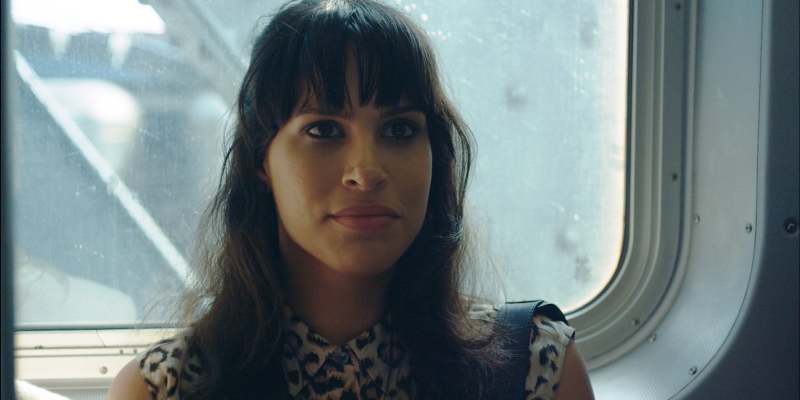
Desiree Akhavan wrote, directed, and stars in this edgy hipster comedy, playing her own version of the Brutally Honest Misanthropic Anti-Pixie Daydream Girl. She vacillates from hyperbolic-but-relatable despair to Ilana Wexler-esque repellant charm. It’s quirky, funny, and delightfully indie, chock-full of the inside queer jokes she’d later employ so well in The Bisexual. Since the release of this film, Akhavan has emerged as one of the most compelling and original voices of her generation, committed to authentic, unsparing portraits of queer millennial life. – Riese Bernard
2. The Handmaiden (dir. Park Chan-wook, 2016)
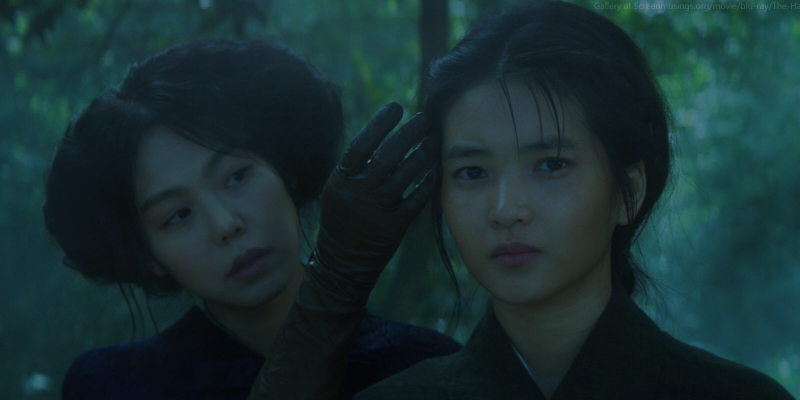
Park Chan-wook’s erotic psychological-thriller-meets-heist-movie based on the novel Fingersmith by Sarah Waters is a feat in measured but stylish storytelling. It’s violent and sexual, but those aspects of its narrative speak to larger themes and the immersive visual landscape of the tale so that there isn’t a moment of the movie that feels gratuitous. It shocks without that being all it’s trying to do. Because ultimately, these are very real characters ensconced in a very real love story. Revenge and romance are driving forces for the movie’s action, and several scenes teeter on the edge of desire and danger. – Kayla Kumari Upadhyaya
1. Pariah (dir. Dee Rees, 2011)
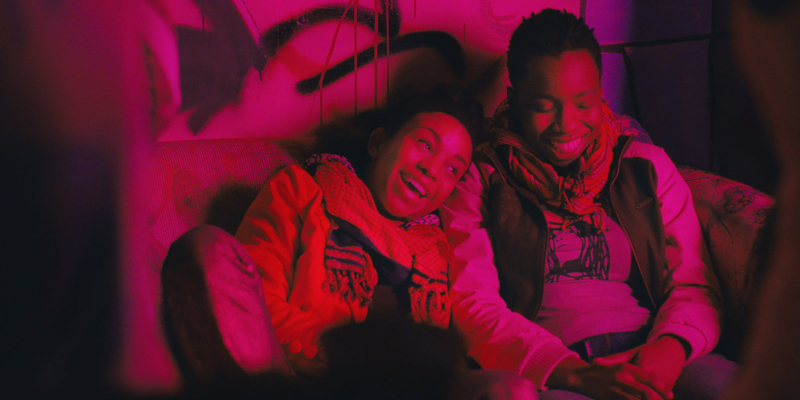
Back in 2018, still basking in the glow of Moonlight‘s upset of La La Land for the Best Picture Oscar, famed lesbian author Jacqueline Woodson asked Lena Waithe if she thought we’d ever have a “lesbian Moonlight.” Waithe quickly points out that we’ve already had one: Dee Rees’ stunning coming-of-age and coming out drama, Pariah. But like its central character, Alike, Pariah found itself adrift in a world not yet ready for its honesty.
Adepero Oduye astounds as Alike, the 17-year-old who navigates her identity along a Brooklyn bus route: literally shifting from the conservative, feminine girl her mother loves to the masculine-of-center woman who loves other women, as she makes her way across town. Pariah is, at times, painful to watch — in the way that things that feel too true usually are — but optimism persists throughout. – Natalie
15 QTPOC Women’s History Month Films You Should Watch Right Now
March is Women’s History Month! Women’s History Month is a nationally recognized month in the United States to “write women back into history,” according to the National Women’s History Project website. And y’all all know it’s not just white women’s history that’s left out of our high school textbooks. I recently did a poll of a class of undergraduate students and literally, like, five of them had heard of the Stonewall Riots before college or in an educational setting at all. Zero of them knew anything about Marsha P. Johnson or Miss Major or Sylvia Rivera. QTPOC often get written out of the retellings of our own LGBTQ history, even within our own communities.
We deserve better. Everyone should know the stories of the lesbian, bisexual, queer and/or trans women of color who’ve been the backbones of LGBT communities forever and ever. But it’s not always easy or accessible to find those stories. I’ve curated a whole month’s worth of really excellent films to get you started. So make some popcorn and put your learnin’ pants on. Be inspired by the QTPOC who came before us and those making history today in these 15 films.
1. Bessie
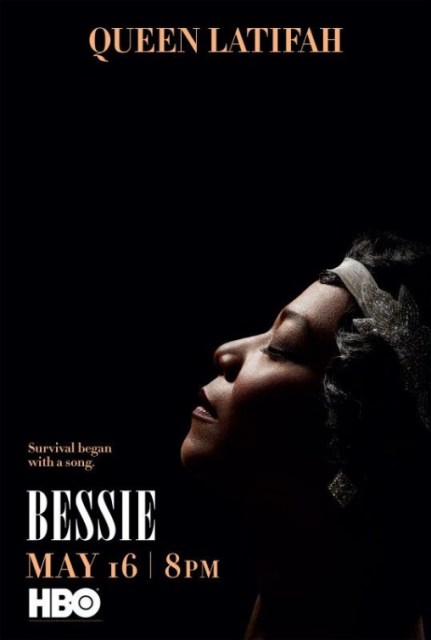
Queen Latifah as Bessie Smith. Queen Latifah as Bessie Smith. Queen Latifah as Bessie Smith. I’m sorry, have you really not watched this film? Because you need to get on it right now. HBO’s four-Emmy-winning televison biopic about blues singer legend Bessie Smith is gorgeous, moving, and deliciously queer.
In the 1920s and 30s, Harlem was a place where queer people congregated; though most of them were married to men, singers like Bessie Smith, Ma Rainey and Gladys Bentley were known to take female lovers and flirt openly with women while touring and sometimes performed in men’s clothing. They all wrote songs that explicitly mentioned lesbian love, which was really unheard of outside of the Harlem Renaissance at that time in America. In Bessie Smith’s song “The Boy in the Boat,” she wrote “When you see two women walking hand in hand, just look ’em over and try to understand: They’ll go to those parties, have the lights down low, only those parties where women can go.”
Bessie’s sexuality is just one aspect of this incredible film about her life and rise to fame, but it’s definitely there, not sanitized out by Hollywood, with Mo’nique playing the fiercely queer and loving Ma Rainey and Tika Sumpter playing Bessie’s lover, Lillian Simpson.
How to watch:
Free with Amazon Prime or HBO, $9.99 to buy on Amazon!
2. Screaming Queens: The Riot at Compton’s Cafeteria

Screaming Queens is a documentary film by trans activist and scholar Susan Stryker detailing the police riots that happened three years before the Stonewall Riots in San Francisco, led by trans women and drag queens. Queens and trans women would gather at Compton’s, a late-night diner, where they were often harassed by police for violating San Francisco’s anti-crossdressing laws or for doing sex work. One night, when the police were arresting a woman at the diner, she turned and threw her coffee in the officer’s face, sparking a pushback by the queer and trans patrons. It was the first known trans riot and led to the first organized support network for trans people by trans people.
While the filmmaker, Susan Stryker is a white woman, two prominent interviewees in the film who recall the riots are women of color Tamara Ching and Felicia Elizondo. Both Ching and Elizondo lived in the Tenderloin district in the 60’s and continue to speak about the history of trans people and communities as lifelong activists. It’s an important event in our collective history that’s often forgotten and yet more proof that trans women and drag queens of color are the ones who were on the frontline of the gay liberation movement in the 60’s and 70’s.
How to watch:
The film is currently available for free through PBS affiliate KQED, so watch it while you can!
3. Kuma Hina: A Place in the Middle
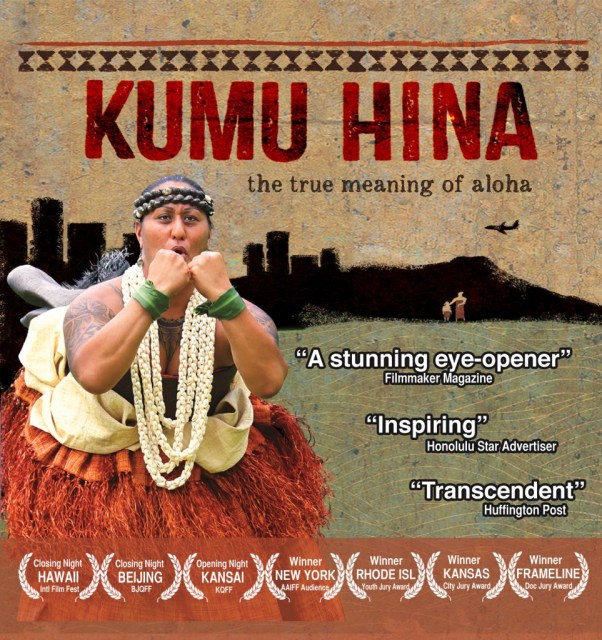
I saw this film at a film festival a few years back and I want to share it with everyone. Unfortunately, most recently, Kumu Hina was cited by the Trump administration as a rationale for the threat to cancel public broadcasting funding. Because that’s the history that’s being made right this moment. Even if it’s being used to stir up hatemongers, though, this movie is truly about love.
Kumu Hina is a māhū (transgender person) who teaches young students about traditional Hawaiian culture through hula. The film follows her for a year through her life and relationships and explores Hawai’i through the lens of gender, class, and ethnic and cultural traditions. One story arc is around a young student who feels called to claim her place as leader of her school’s all-male hula troupe, who is taught and mentored by Kumu Hina.
How to watch:
Available on Netflix, $3.99 to rent on Amazon.
4. Paris is Burning

A classic. There’s still a lot of debate over Paris is Burning, but at the end of the day it’s a film that resonates for a lot of QTPOC, particularly Black and Latinx trans women. In fact, it was included in the number one spot in the 15 Best Trans Woman Movies According to Trans Women list Mey curated in 2015.
The film follows powerful trans artists like Rachel Harlow, Octavia St. Laurent, Crystal Labeija, and Venus Xtravaganza over a year in the late 80’s in the ball scene in NYC.
In the 15 Best Trans Movies… article, contributors had this to say about the film:
“I want to recognize the empowerment that, as a transgender woman of color, I experience watching Paris is Burning. This film not only seduced me as a viewer, but empowered me and gave me powerful women to look up to. Dorian Corey, for instance, throughout the movie drops some of the most amazing life knowledge that you wouldn’t be able to get from your own grandmother. Venus Xtravaganza, is unapologetic in her pursuit of a beautiful life. Octavia St. Laurent, is a powerful young black woman who has the skills and ability to chase her dreams regardless of her gender history. These are stories that are epics, in their own right.” – Lexi Adsit
“I can’t help but be overwhelmed with appreciation for the women who stood before me. Rachel Harlow, Octavia St. Laurent, Crystal Labeija, Venus Xtravaganza, the list goes on. I see the strength in them and it gives me the strength to exist unapologetically, to make things better for the next generation of girls.” – Trace Lysette
How to watch:
Available on Netflix!
5. KIKI

On the other end of Paris is Burning is KIKI, a documentary set 25 years after Paris about the ball scene and community that continues to thrive in NYC. Kiki is a direct collaboration between Twiggy Pucci Garçon, the founder and gatekeeper for the Haus of Pucci, and Swedish filmmaker Sara Jordenö. It features a score that going to make you want to jump up and dance by ballroom and vogueing producer collective Qween Beat.
The film follows seven participants in Kiki balls over four years, using the kiki balls as a way to explore systemic issues that queer and trans youth of color face today.
How to watch:
Available on Vudu, iTunes, YouTube, Google Play, or $6.99 to rent on Amazon.
6. Chavela

Chavela Vargas (Isabel Vargas Lizano) was a Costa Rican-Mexican band leader best known for her performances of Mexican rancheras, a typically machismo style of music. She was one of the first Latin American singers to sing in this style directly to women (not changing the pronouns in rancheras songs) and to dress in typically male clothes. She came out officially at the age of 81 in her memoir, Y Si Quieres Saber de Mi Pasado, but she never hid her relationships with women in her life or her songs. Vargas openly loves many women, including artist Frida Kahlo and women’s rights activist Alicia Elena Pérez Duarte y Noroña. In fact, you may remember her from the 2002 film Frida, in which she appeared singing the Mexican fold song “La Llorona.”
Never-before-seen interviews with Chavela Vargas make up most of the film, which came out last year. Vargas died in 2012 in Cuernavaca, Mexico at the age of 93. In Raquel’s review of the film, she wrote:
CHAVELA is a story of a remarkable person told by the people who loved and admired her most. “There isn’t a lesbian in Mexico who doesn’t know Chavela Vargas,” says one of the interviewees in the documentary, “And who doesn’t love her.” She opened doors for art, gender expression, and sexuality in unprecedented ways. The people who followed in her footsteps show a deep gratitude and appreciation.
If you’re unfamiliar with rancheras, you need to see this film. Even if you can’t afford to rent it, you can find many live performances of Chavela Vargas, who performed late into her life, on Youtube. Ranchera songs draw on love and loss and Vargas’ signature drawn-out alto reverb take on the genre will give you goosebumps. (I’m listening to her music right now as I type this.)
How to watch:
Available on Vudu, iTunes, Google Play, or $4.99 to rent on Amazon.
7. Alice Walker: Beauty in Truth

Alice Walker, writer and activist and the first Black woman to win the Pulitzer Prize for The Color Purple, is the epitome of what it means to live authentically as a feminist activist and an openly bisexual woman. This documentary is really just so well done, covering Walker’s life from her childhood in Georgia, where she confronted violence and racism and poverty, to her coming-of-age during the civil rights movement and her continued activist today.
In the film, Walker says of her detractors, “They had a problem with my intellect and they had a problem with my choice of lovers and they had a problem with my everything. So choose one. Choose all. They just had a problem.” If you didn’t know Walker’s work and legacy before watching this film, you’ll be inspired by it, for sure!
https://www.youtube.com/watch?v=Hj17Wn2AYlg
How to watch:
The whole film is currently unavailable, but you can watch many free clips on PBS (US only)!
8. Pay It No Mind: The Life and Times of Marsha P. Johnson

Cut together from clips of interviews with Marsha P. Johnson and people who knew her, this is a really loving, accessible documentary about the Mayor of Christopher Street. Marsha “Pay It No Mind” Johnson was a Stonewall veteran who is sometimes credited with throwing the shot glass that set the tone of the riots. She and Sylvia Rivera created the organization Street Transvestite Action Revolutionaries (S.T.A.R.) which advocated for and cared for trans women (including trans women doing sex work) at a time when no one, including the gay liberation movement, was caring for trans women. She also participated in many direct actions with the Gay Liberation Front and, later, ACT UP. She marched in the first Christopher Street March in 1970, what would become what we know now as a Pride parade. According to the documentary, in 1973, Marsha and Sylvia were told they couldn’t march in the gay pride parade because the participation of drag queens would “[give] them a bad name.” They staged a march defiantly ahead of the parade instead.
If you don’t know Marsha, you need to watch this documentary. If you only know that she was at Stonewall, you also need to watch this documentary. The filmmaker has made it available for free on YouTube, so you really have no excuse not to!
How to watch:
9. S.T.A.R. and Lily Hicks Anderson (We’ve Been Around Episodes 1 and 5)
https://www.youtube.com/watch?v=0dduj7IMKL0
Just click those videos to watch these delightful and heartfelt and empowering episodes of We’ve Been Around, a webseries celebrating and amplifying the stories of trans people in U.S. history. If you have always wondered just how good a production about trans people produced by trans people at all levels could be, check out this series.
S.T.A.R. chronicles Sylvia Rivera and Marsha P. Johnson’s activist work from the Stonewall Riots to starting Street Transvestite Action Revolutionaries to their later work in the 80’s and 90’s.
The episode on Lucy Hicks Anderson tells the story of Hicks, a Black woman who was a successful Prohibition-era entrepreneur and well-connected hostess to elite society. When she was outed as a transgender woman, she became the first person to have to defend her marriage rights in court.
How to watch:
Online, for free, right now!
10. Check It
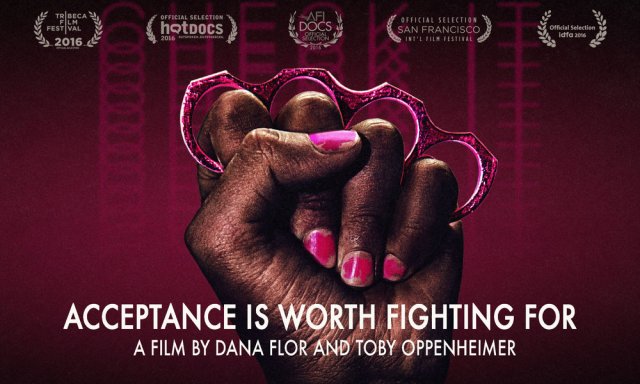
Check It is the only documented LGBT gang in the United States and possibly anywhere in the world, started in 2009 by a group of 9th graders who were tired of being assaulted and bullied. Today, they are a gang in every sense of that word, from the deep sense of family and support to the long rap sheets for assault and armed robbery. This documentary follows members of Check It and show the ways that LGBTQ youth of color are still fighting for their lives and for their futures and taking matters into their own hands.
Some people may feel a way about violence and LGBTQ people turning violence back on those who would perpetrate violence against them. My takeaway was that youth were fighting for survival and for their collective survival, making a choice to transform victimhood into agency, in much the same way as the Stonewall veterans who took a stand in 1969. I think Sylvia and Marsha would have been proud of the way they choose to take care of each other above all else.
How to watch:
Available on Hulu, Google Play, iTunes, YouTube, Vudu, and $2.99 to rent on Amazon.
11. MAJOR!

Miss Major is the nickname for Major Griffin-Gracy, a Black Stonewall veteran, activist, and community elder for trans rights and women of color. This documentary follows her life as a leader in the community and as the executive director of the Transgender Gender Variant Intersex Justice Project, an organization which aims to free trans people from the prison-industrial complex.
Miss Major’s activist and community work spans decades, from being arrested as a leader in the Stonewall Riots to HIV/AIDS healthcare and direct service advocacy to joining her current organization that fights against the mass incarceration of and police brutality against trans and intersex people of color. Miss Major particularly works with trans women in prison and those who’ve been formerly incarcerated.
In an interview with CBC radio, Miss Major said she hopes the documentary about her life and work will be “a tool to present to young trans women their history… [and] a reminder for herself that young women still need her help.”
How to watch:
Free with Amazon Prime or $2.99 to rent on Amazon, available through OutTV in Africa and Canada and through SBS Australia.
12. ALTAR: Cruzando Fronteras, Building Bridges

Filmmaker and professor Paola Zaccaria created ALTAR as a love letter to the work and the activism that Chicano-queer writer and feminist Gloria Anzaldúa began. Four years after Gloria Anzaldúa’s death, the filmmaker and director pulled the film together from the Gloria Anzaldúa Papers and the theory that Anzaldúa put forth in her seminal work Borderlands/La Frontera:The New Mestiza.
Anzaldúa developed intersectional theories about marginalized identities, the concept of living in-between, and the literal and figurative mixed cultures that develop along “borders.” Gloria Anzaldúa passed at the age of 61 in 2004 at her home in Santa Cruz, California. She worked as an academic and writer up until her death and a group called the Society for the Study of Gloria Anzaldúa (SSGA) was established in 2007 to continue to engage in understanding and studying Anzaldúa’s work.
In today’s world, conversations about the border and what the border represents to Latinx people, to immigrants, to women, is incredibly relevant. Zaccaria has made the film available to watch for free on YouTube.
How to watch:
13. Out In The Night

The New Jersey 4 are four lesbian Black women who were all found guilty of second-degree gang assault for defending themselves against a homophobic attack. Renata Hill, Patreese Johnson, Venice Brown and Terrain Dandridge are close friend that were walking in Greenwich Village on a summer night in 2006. They were sexually harassed by a man who threatened them with corrective rape and physically attacked them. When the aggressor lunged at them and was choking Renata, Patreese pulled a small knife from her pocket and stabbed him. Everyone walked away from the incident and the officers who responded to the scene said the injuries from the stabbing were minor.
Despite that, the girls were all charged with felonies — gang assault, assault and attempted murder. The media went on a homophobic and racist feeding frenzy, calling the girls a “lesbian she-wolf pack.” Three of the girls took plea deals to avoid even harsher penalties and all served time in prison. Out in the Night sets the record straight and exposes the real story behind the media sensationalism.
This is a difficult but important film to watch, lest we forget the story of the New Jersey 4 and the many other Black and brown lesbians of color who didn’t live to tell their stories or whose stories of persecution in the streets and by the criminal justice system will never be seen on a big screen. It’s not exactly a feel-good film, but the movie effectively cleared their reputations in the media. All four are out as of 2013 and have been able to travel to screenings and communities across the country to talk about their experiences.
How to watch:
Available on Vudu, Google Play, YouTube, and $3.99 to rent on Amazon.
14. Frida

When Frida came out in 2002, I was shocked to see a film showing an openly bisexual Mexican woman acting… openly bisexual. Watching Salma Hayek as Frida Kahlo seduce Ashley Judd’s Tina Modotti was somewhat unprecedented in a Hollywood mainstream biopic. The film doesn’t go too deep into Frida Kahlo’s catalog of female lovers, but what was perhaps unique for 2002 is that the sexuality of the character wasn’t an axis of the narrative. It just was. The film itself is more about Frida and her husband, Diego Rivera, and their political activist and artistic work.
Kahlo was a Mexican painter who is most famous work for her self-portraits that expressed her physical and mental pain and her sexuality. Her many lovers included Josephine Baker, Georgia O’Keeffe, Chavela Vargas and Leon Trotsky. Kahlo was a member and active political supporter of the Mexican Communist Party. Though she was an influential artist, her work is better known today than it was in her time, when her paintings were often overshadowed by her husband’s work. After her death, Kahlo’s artwork was rediscovered by art historians and she is now considered one of the most influential female artists in the world.
This narrative feature film has all that high production value you’d expect from a box office biggie. Salma Hayek is incredible as Frida. Even though the focus of the film is very much on her relationship with Diego Rivera and the filmmakers take a great deal of artistic license, it’s well worth watching.
How to watch:
Available on iTunes, Vudu, Google Play, YouTube, and $2.99 to rent on Amazon.
15. Southwest of Salem

From Yvonne’s review and interview with filmmaker and director Deborah Esquenazi:
In 1997 and 1998, in the wake of the height of the Satanic Panic of the 80s and 90s, four Latina lesbians from San Antonio, Texas were convicted of aggravated sexual assault of two young girls. Elizabeth Ramirez, Cassandra Rivera, Kristie Mayhugh, and Anna Vasquez were all friends and were between 19 and 21 at the time. The two young girls who accused them of the crime were Elizabeth Ramirez’s 7 and 9-year-old nieces. They alleged their aunt and her friends gang raped them at Ramirez’s apartment when the girls stayed with her for a week in the summer of 1994. The women were baffled about the accusations and maintained their innocence while cooperating with the police and turning down plea bargains. It didn’t matter, they were all convicted. Ramirez, the supposed ringleader, received a 37.5 year sentence and the rest getting 15 years each. Even though there wasn’t any hard evidence against the women, they went to prison in 2000. In addition to homophobia playing a major role in wrongfully convicting the women, investigators believed the women were involved in “Satanic-related sexual abuse” and presented now debunked forensics as major evidence against them.
Filmmaker and director Deborah Esquenazi began researching the case in 2011 and in 2012 began filming the women in prison. Her documentary, Southwest of Salem tells the story of four Latina lesbians who were found guilty of a crime they didn’t commit and how the legal and criminal justice systems failed them as queer women of color. The film follows their journey in prison and their fight to clear their names.
https://www.youtube.com/watch?v=j7jwawgzUJA
How to watch:
Rent on YouTube for $2.99 or stream for free on Amazon Prime
Feel free to add anything I didn’t include in the comments! I’d love to hear about your favorite films celebrating queer, bisexual, lesbian and trans women of color!
The Seven Most Influential Lesbian Movies of The Last Seven Years
Despite the strides queer women have made on TV in the past seven years, the big screen has mostly eluded us. It’s hard enough to get a movie made with a straight female lead. Getting a movie made with a main lesbian character — thereby cutting her off from a big-name male co-star as romantic interest — is basically impossible. 2015 was the exception to this rule, but it’s important not to mistake a moment for a trend. Below are the seven most influential lesbian/bi/queer movies that have been birthed into the world since our own birthday in March 2009.
They are, you’ll notice, overwhelmingly, glaringly, painfully white. We’ve come a long way, baby. We’ve got a long way to go.
The Kids Are All Right (2010)
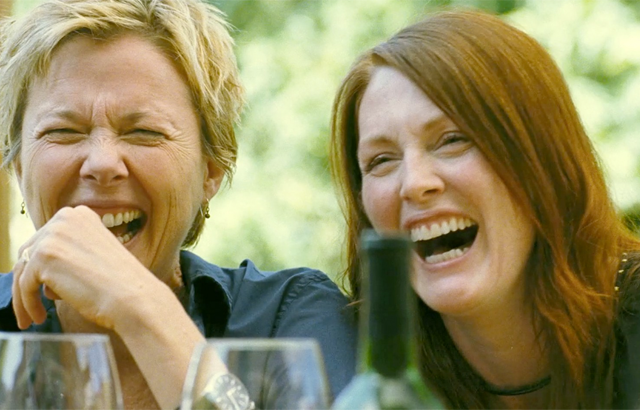
The criticisms of The Kids Are All Right are scathing and they are valid. The film centers on a man — the sperm donor for Annette Bening and Julianne Moore’s two children — to the point of one of the lesbian moms having an affair with him. During the press tour, Director Lisa Cholodenko even notoriously said she didn’t make the movie for queer women: “I was much more interested in reaching out to the male population than I was concerned about alienating a sector of the lesbian population.”
Lesbians sleeping with dudes is one of the oldest, most offensive tropes in the book, and it’s particularly discouraging here because of the sad fact that the movie probably wouldn’t have been made by a major studio if it hadn’t included a central storyline for a man.
However, it’s impossible to overlook the The Kids Are All Right‘s significance. It won the Golden Globe for Best Motion Picture in 2010 (and Annette Benning won the Globe for Best Actress), and was nominated for a four Academy Awards as well. Focus Features distributed the beloved lesbian classic Imagine Me & You in 2005, but it didn’t make much of a splash at the box office or receive any critical acclaim with mainstream viewers. This was Focus’ first time dipping their toes back in the lady pond and it paid off enormously. That coupled with the success of their other award-winning gay film, Brokeback Mountain, was the catalyst for Focus Features investing in other queer-themed films, and it proved to serious actresses that playing gay could translate into trophies.
Also, the ending is pretty happy and no one dies. In 2016, that’s still a big deal!
Freeheld (2015)
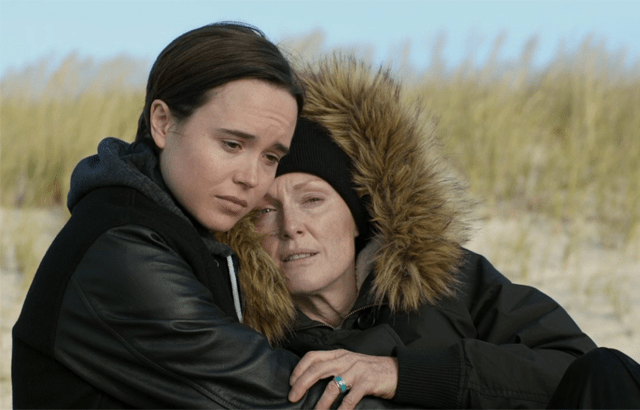
Freeheld is one of the only widely distributed movies in history to feature two queer female characters in the leading roles. And, of course, it’s Ellen Page’s first gay role, and after she came out as a lesbian, too!
In her review, Riese said:
If you’re interested in watching a really solid film with a lesbian couple smack dab at the center of a small story with national implications, I cannot recommend a better place to do so than in a movie theater screening Freeheld. It’s not without lightness, either, or humor in fists, humor at the moments when you most need it (because you were just crying). It’s a real rollercoaster, y’all.
And it’s true! You will cry for two hours. But you know a lesbian will die going into the movie, and you know that death is real (as in real life) and that it was catalyst for some enormous leaps forward on the marriage equality front in The United States. It’s not a stray bullet; Laurel’s death meant something real in the real world.
Carol (2015)
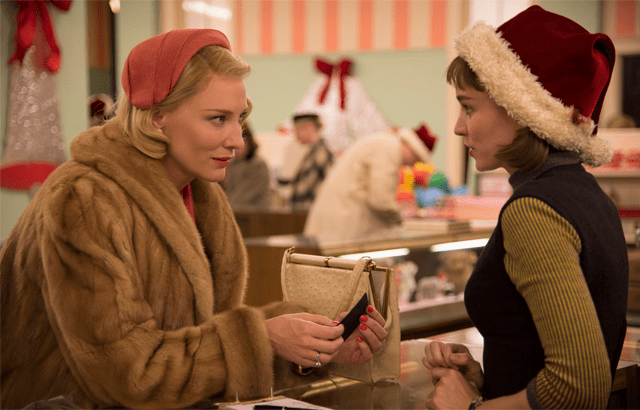
Carol may have gotten shut out of the Oscars and Golden Globes (though it was nominated for dozens of them) but it is still — unequivocally, I think — the best lesbian movie ever made, and one of the most feminist movies ever made. It also doesn’t need the qualifiers. It’s one of the best movies ever made, period. What I wrote in my review is still true:
Carol is the very first piece of queer art I’m glad I didn’t engage with before right now, with all my lived experience tucked in my pocket, and years and years of doing this job under my belt. To grasp the uncommonness of the incomparable Cate Blanchett and Rooney Mara inhabiting every centimeter of these fully realized queer female characters and pinging off of each other like electric pinballs. To understand what it means that Carol arrives in furs like a predator and abandons them before the movie’s end, what it means that Carol is in nothing but red in the first act and that it’s Therese who dons it in the final scenes. To watch them watching each other through windows — endlessly, it seems, this movie is filmed through windows — and to feel it all the way down in my bones when Therese is ready to stop just looking. To appreciate that Haynes knows when to let the film breathe and when to pull the narrative so taut that it seems like your heart will hammer its bloody way right out of your chest. To value the rarity of seeing a lesbian film stitched together with such accomplished precision it makes me wish the word “epic” hadn’t been completely diluted so I could bring the full weight of its meaning to bear on this love story.
And I will never stop believing that it was Carol‘s misandrist heart that caused it to flop with the old white men at the Academy and in the Foreign Press who hand out the hardware.
Bessie (2015)
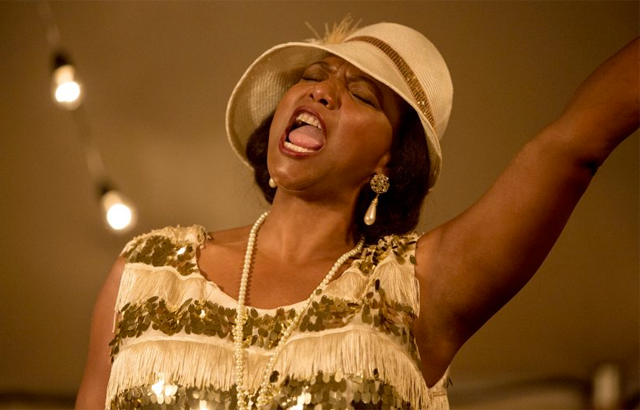
It’s egregious that the only critically acclaimed film featuring a black lesbian/bi character in the last seven years was made for HBO. I mean, don’t get me wrong, HBO is a great platform for quality content, but Bessie deserved even more. It won four Emmys, a Critics’ Choice award, a Screen Actors Guild Award (for Queen Latifah), and a Directors Guild of America Award (for Dee Rees).
From Gabby Rivera’s gorgeous review:
Bessie is bomb, y’all. Super bomb. She stands up for herself and her people even in the face of the damn Klan. The Klan and the moments with rich white people are fucking terrifying. Like hold-my-breath, oh-my-god is Bessie going to die right now terrifying. There are no white saviors in this film, thank the universe. Bessie Smith doesn’t cater to white people or men and as brave as her fight is, it’s equally gut-wrenching; at any moment, the world she fights for could have swallowed her whole and left her to rot. Queen Latifah ever so capably maneuvers Bessie from any sort of static strong-Black-woman archetype and weaves a palpable vulnerability, an ache for love, into her portrayal and it’s glorious.
Bessie is an exceptional film, and Queen Latifah has never been better. If we need more of any of the movies on this list, Bessie is the one.
Pride (2014)
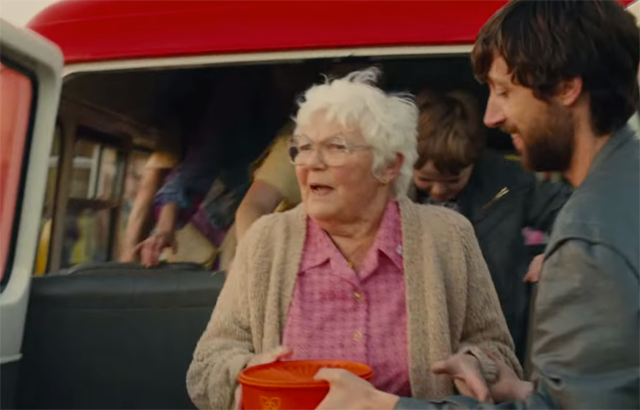
This is the movie that made me cry the most — yes, even more than Freeheld because I stifle my sad cries and roll with my happy ones. It’s the only UK-crafted movie to make the cut because it’s enormous success across the pond propelled it to acclaim here too. It won the Queer Palm at Cannes, two British Independent Film Awards, and a BAFTA.
Kaitlyn’s review really captures what makes this movie so great:
Rather than focusing purely on pride marches or the AIDS crisis or any of the other very real, important issues the early LGBT rights movement faced, this movie centers on a small group of queer activists (Lesbians and Gays Support the Miners) and their support of a Welsh mining community that’s participating in nationwide strikes against shrinking subsidies. They struggle to find a union that will accept their donations, and once they finally do, it’s only by mistake that they’re accepted. Luckily, it turns out that the town is home to some very welcoming, kind people, and they stand up against those who resist; it’s that struggle that propels us through the two-hour film. And that’s a very clever move, because by focusing on the miner strike storyline — which was a huge national story when it happened — the film creates a more authentic environment in which to tell those other stories of the lesbian and gay diaspora.
Pride has a has a lovable British sensibility and feels so authentic you’ll find it hard to believe, at times, that you’re not watching a documentary.
Blue Is the Warmest Color (2013)

Has there ever been a more hotly contested lesbian film than Blue Is the Warmest Color? Queer critics run the spectrum from thinking it’s a piece of voyeuristic garbage to the a piece of revolutionary art. The controversy doesn’t stop with film criticism and lesbian fandom, though. After the film’s release, Léa Seydoux and Adèle Exarchopoulos said the experience of working with director Abdellatif Kechiche was so traumatic they’d never do another movie with him again.
It’s very common in mainstream art criticism to look past a creator’s dubious behavior to appreciate the art he creates. Blue Is the Warmest Color is the first time queer audiences were faced with that dilemma in such a far-reaching way. It unanimously won the Palme d’Or at Cannes, and became the first movie to extend that award to both the director and the actresses. In fact, Seydoux and Exarchopoulos are the only women, ever, besides Jane Campion to receive the Palme d’Or. It was also nominated for a Golden Globe and BAFTA for Best Foreign Language Film. (The studio strategically released the film at a time that made it eligible for the French Oscars, which meant it wasn’t eligible for an American ones.)
Critics who loved Blue praised it for being “raw, honest, powerfully acted” and “deliciously intense.” All of which things are very true, though I’m not sure I would call the intensity “delicious.” It’s so intense it’s almost nauseating!
Blue Is the Warmest Color is probably the most talked-about lesbian film in history. It’s also notable that, unlike the graphic novel on which it was based, no one died in the end.
The Runaways (2010)
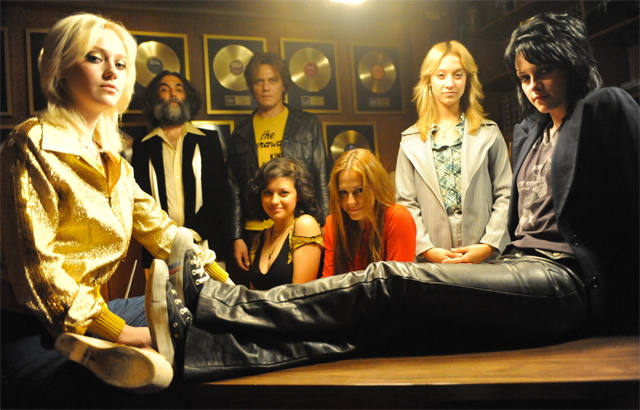
Julie and Brandy (in our box office) reviewed The Runaways for us, so if you allow yourself only one piece of Autostraddle nostalgia today, click through and watch their review for yourself. You won’t be sorry. There are wigs.
No one can say for sure if this is the film that caused Kristen Stewart to finally accept her undefinable sexuality, but probably it is, right? Probably you don’t play Joan Jett and come away straight. Queer women were always going to go all in on this, and not just to see Joan and Cherrie making out on screen. No, this is The Runaways, the gateway to all our all-female rock-and-roll dreams, our dark angel icons! And while the film didn’t get everything right about the band, everyone from Joan and Cherrie to the press praised it for capturing that “despair and frustrated energy” that pervaded life in the mid-70s.
And, like I said, it made KStew gay.
HBO’s “Bessie” is The Bisexual Badass Biopic Of Our Dreams
This review contains mild spoilers for HBO’s Bessie, which airs tonight at 8:00 p.m.
Queen Latifah was born to play Bessie Smith.
I’ve grown up with Queen Latifah in my pop culture world. First, she was my favorite rapper because she dared to ask men “Who you calling a bitch??” on the rap anthem/classic U.N.I.T.Y. Then Queen La blew up the television sitcom world with Living Single, a show about a group of young Black professionals having fun and working their way up in the world, and I loved every minute of it. Shit, truth be told, Living Single’s whole look got snatched by white media to make Friends, amiright?
Anyway, all this to say, I’ve watched the Queen make so many different moves and artistic choices, and it’s here, in Bessie, that she radiates. Bessie is the role of a lifetime for Queen Latifah. She’s never been more poised, emotionally raw and free in her skin in any other role. Not in Chicago, not even on her own talk show, The Queen Latifah Show.
All hail the return and the continued Black Reign of Queen Latifah.

All photos courtesy of HBO.
Directed by Dee Rees, Bessie is the biopic of the most popular female blues singer of pre-Great Depression America. And honestly, before watching this movie, I didn’t know too much about Bessie Smith at all. Damn, y’all, we’ve been missing out on a legend.
Bessie Smith belongs up there at the top of our bisexual role models list: above Evan Rachel Wood Bisexual and past Callie La Mega Badass Bisexual Babe. Bessie’s romantic entanglements move the narrative – as is the case in most films about women – but this focus feels more authentic. Bessie doesn’t rely on any of her lovers to fuel her ambition or push her career forward. The momentum is all hers. And damn, it looks good to see Queen La as Bessie cuddled up with the beautiful Lucy, played by Tika Sumpter, exchanging sweet words while wearing silk pajamas. It’s equally as thrilling to watch Jack Gee, played by the ever enigmatic Michael Kenneth Williams, willfully audition to be Bessie’s main man. As for Bessie, she snaps them both up and let’s them know she doesn’t belong to anyone but herself.
Now, some of the romantic twists are a bit confusing. If you’re hoping there’s gonna be a moment where everyone sits down and discusses the parameters of their polyamory, you’re gonna be waiting a while. Order some delivery. Keep waiting, cuz it ain’t happening. I wanted a little more explanation: like how did Lucy feel when Bessie started up with Jack? How did Jack feel when Bessie started banging new dude and Lucy and whoever? Was this just how things went back in the day? All show and we just don’t talk about it? The one constant is that Bessie’s in charge.
Bessie is bomb, y’all. Super bomb. She stands up for herself and her people even in the face of the damn Klan. The Klan and the moments with rich white people are fucking terrifying. Like hold-my-breath, oh-my-god is Bessie going to die right now, terrifying. There are no white saviors in this film, thank the universe. Bessie Smith doesn’t cater to white people or men and as brave as her fight is, it’s equally gut-wrenching; at any moment, the world she fights for could have swallowed her whole and left her to rot. Queen Latifah ever so capably maneuvers Bessie from any sort of static strong-Black-woman archetype and weaves a palpable vulnerability, an ache for love, into her portrayal and it’s glorious.
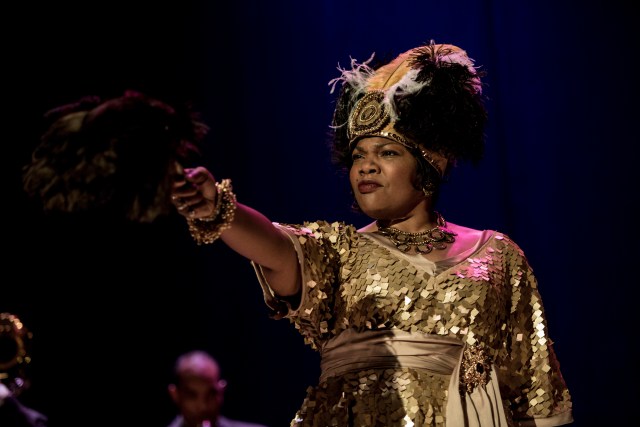
But let’s backtrack a second, because maybe you’re not with me right now, maybe you’re too busy scrolling through Tumblr for pics of KStew and new boo and that’s okay. Lemme pull y’all on back to this movie, right here. ‘Cuz Mo’Nique literally almost stole Queen La’s whole damn show and that woulda been some shit. Instead of stealing the thunder, Mo’Nique’s portrayal of Ma Rainey, the world’s most famous old school butch switch daddy, flows effortlessly alongside Bessie. Mo’Nique is a powerhouse, a sexy badass and if you didn’t f*ck with Mo’Nique before, ya better start now or you’re gonna miss your life.
Mo’Nique’s Ma Rainey wears a 3-piece suit one night and sings a song about not needing a johnson to please the ladies. I started screaming and fanning myself on my couch. The next night, she’s on stage in a beautiful glittering gown, complete with a white feather in her hair, crooning to a sold-out crowd panting to hear her moan the blues. I kinda loved their non-static presentations. Sometimes I feel like our community is missing out on that type of fluidity. Ma Rainey slayed in her suit and her dress and could give one damn if you cared. She got the ladies, the cash and the fame no matter what.
Here’s an excerpt from my notes while watching:
MONIQUE AS MA RAINEY OHMAGAD MA RAINEY WAS GAY-ISH TOO
I’m literally blushing right now. Ma Rainey has all the fine girls sitting on her lap, not even twenty minutes in and we get Mo’Nique in a full tux singing a swag ass song about being butch and not needing a johnson to satisfy all the ladies omg omg i am hyperventilating. AYYYYY.
I think that kinda sums her all up? Yes?
Ma Rainey takes Bessie under her wing and teaches her how to be a traveling performer. A kinship blossoms between them; they both love women, sing the blues, and have to deal with white people trying to steal their profits and men who want to control them. It’s a shame that their relationship turns sour, but it’s that break that pushes Bessie out into the world. It’s then that she claims her identity as an artist and becomes a star.
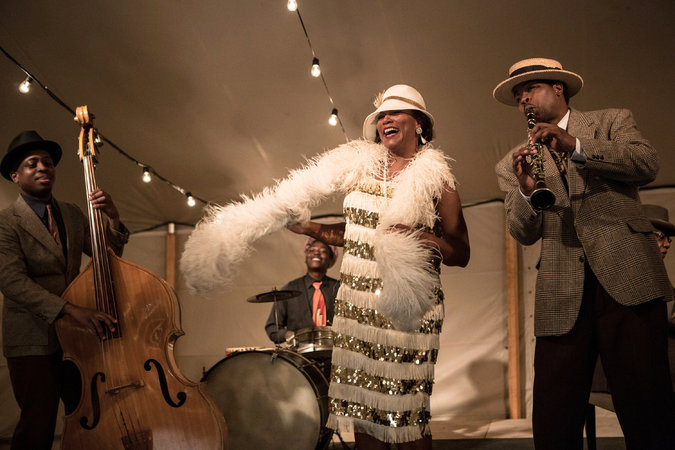
This movie is well-done, like so well-done. The vaudeville stage moments and all of the singing in clubs and giant tent revivals are lively and beautiful. The black excellence in this film is something to behold and revel in. Everyone is gorgeous. The costumes, the wigs, the make-up, the dancing: all of it is authentic and just so much damn fun to watch. There aren’t enough period dramas with Black people and people of color at the forefront, and not enslaved or at the mercy of white people. Bessie transcends all of that. Bessie is alive and vibrant.
And best of all, at least for me, the healing that Bessie needs to pull her life together is found in her friendship with Ma Rainey. Like: be still my damn heart. Do you know how beautiful and profound it is to witness two Black women heal each other? The final moments between Ma and Bessie got me weepy eyed. And I’m hoping you’ll feel it too.
Watch Bessie. Do it for the moments of bisexual badassery. Do it for the love of the blues. But goddammit, watch Bessie so that HBO knows this is the type of content we need and want and so that more Black women and women of color get the roles they need as actors and directors in an industry so polluted by rwm: rich white men.
Watch Bessie because her legacy is an important part of our history as queers in this world.
So go, watch, and then come back here and tell us all your feelings.
Bessie premieres tonight on HBO at 8pm EST.
